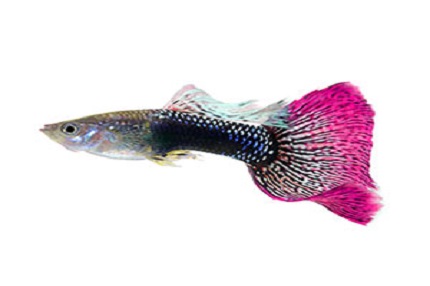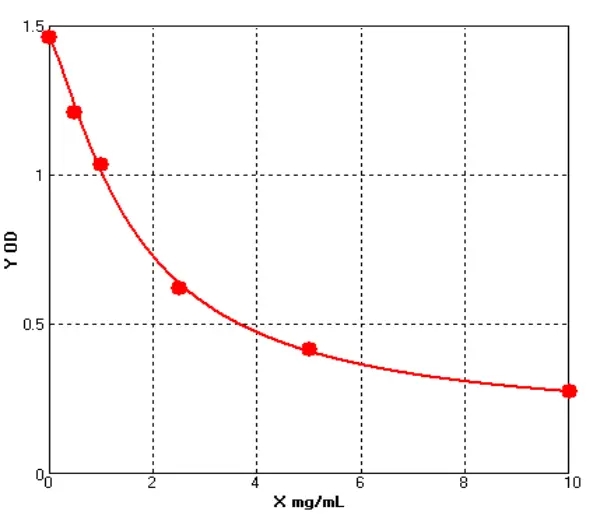Search ELISA Kits
Mouse ELISA Kits Types
-
Mouse Alanine Aminotransferase ELISA kit (E03A0388)
Cat. No.: E03A0388
Detection Range: 10-250 U/L
Reactivity: Mouse
Sensitivity: 1.0U/L
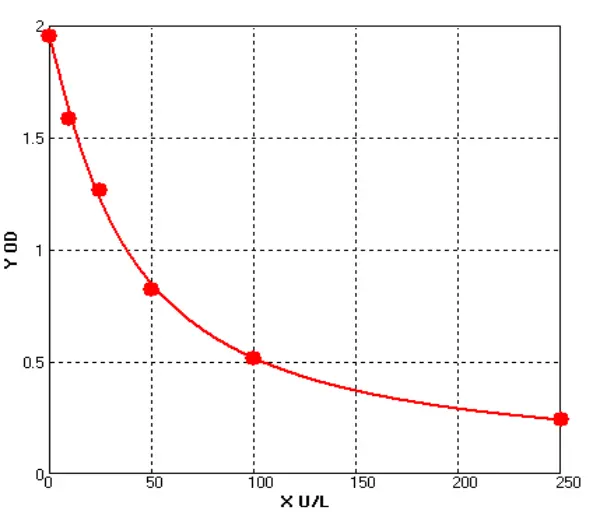
-
Mouse Uric Acid ELISA kit (E03U0078)MANUAL
Cat. No.: E03U0078
Detection Range: 10-250umol/L
Reactivity: Mouse
Sensitivity: 1.0umol/L
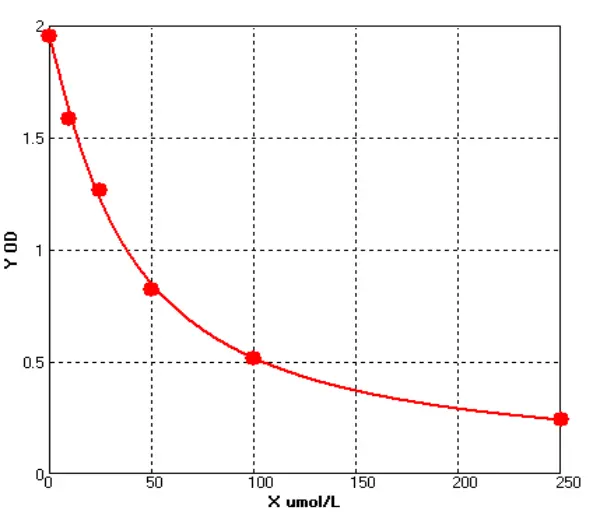
-
Mouse Protein Kinase B ELISA kit (E03P0661)MANUAL
Cat. No.: E03P0661
Detection Range: 2.5-50ng/ml
Reactivity: Mouse
Sensitivity: 0.1ng/ml
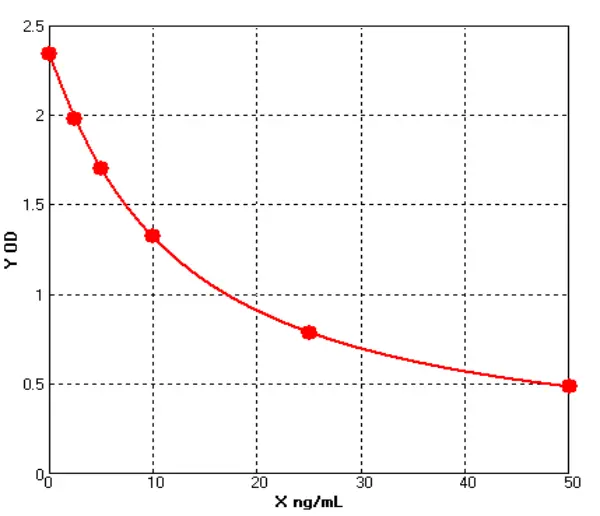
-
Mouse Interleukin 4, High Sensitivity ELISA kit (E03H1475)MANUAL
Cat. No.: E03H1475
Detection Range: 10-250 pg/mL
Reactivity: Mouse
Sensitivity: 1.0 pg/mL
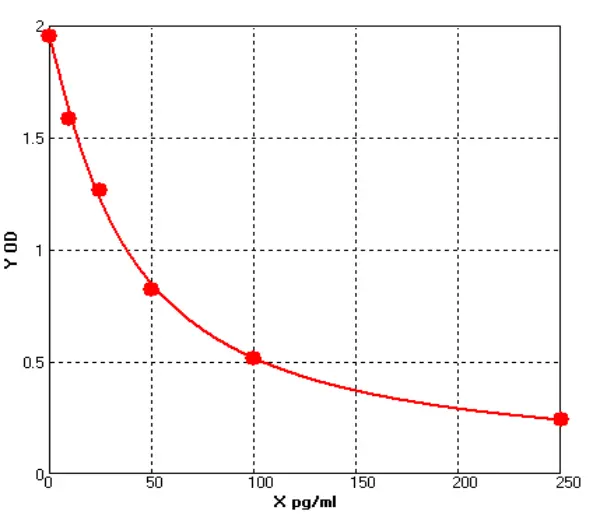
-
Mouse Lipoprteinlipase ELISA kit (E03L0005)MANUAL
Cat. No.: E03L0005
Detection Range: 10-250 ng/mL
Reactivity: Mouse
Sensitivity: 1.0 ng/mL
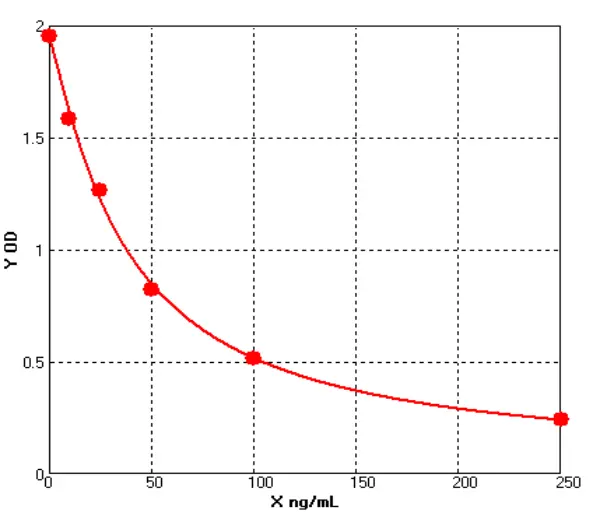
-
Mouse Orexin A ELISA kit (E03O0321)MANUAL
Cat. No.: E03O0321
Detection Range: 100-2500pg/ml
Reactivity: Mouse
Sensitivity: 1.0pg/ml
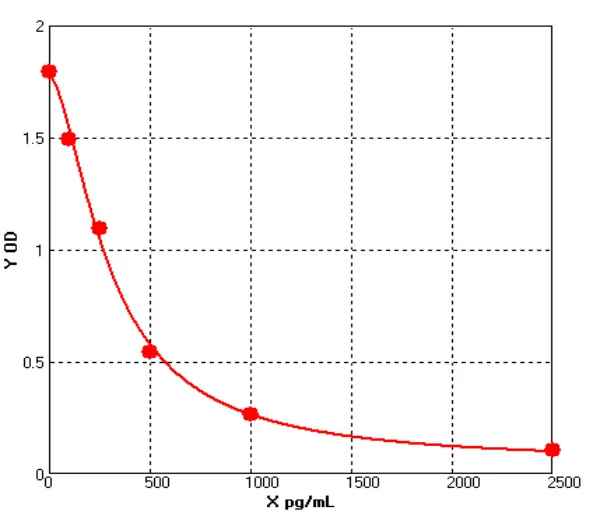
-
Mouse Orexin B ELISA kit (E03O0340)MANUAL
Cat. No.: E03O0340
Detection Range: 100-2500pg/ml
Reactivity: Mouse
Sensitivity: 1.0pg/ml

-
Mouse Anti-Mullerian Hormone ELISA kit (E03A0433)MANUAL
Cat. No.: E03A0433
Detection Range: 1.0-25ng/ml
Reactivity: Mouse
Sensitivity: 0.1ng/ml
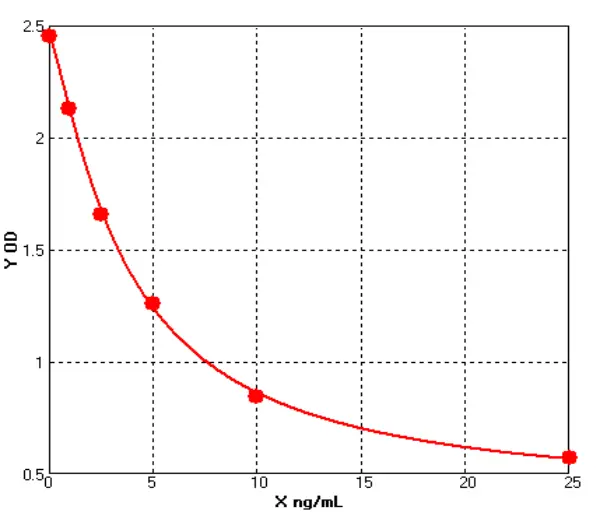
-
Mouse Parathormone Intact ELISA kit (E03P0572)MANUAL
Cat. No.: E03P0572
Detection Range: 50-1000pg/ml
Reactivity: Mouse
Sensitivity: 1.0pg/ml
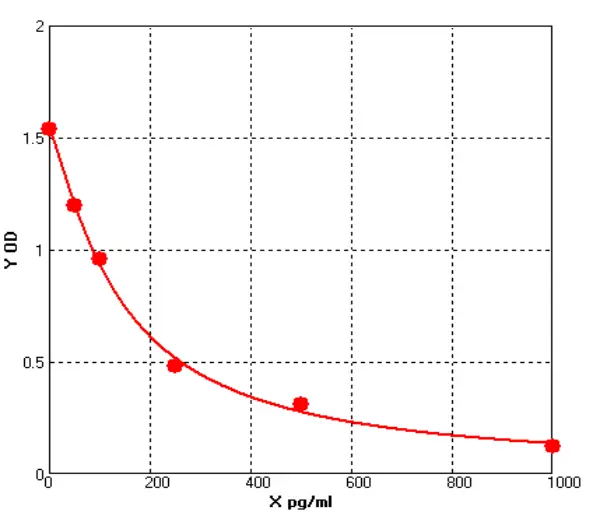
-
Mouse Colony Stimulating Factor 1 ELISA kit (E03C0110)
Cat. No.: E03C0110
Detection Range: 50-1000pg/ml
Reactivity: Mouse
Sensitivity: 1.0pg/ml

-
Mouse Anti-OVA-IgE ELISA kit (E03O0334)MANUAL
Cat. No.: E03O0334
Detection Range: 1.0-25μg/ml
Reactivity: Mouse
Sensitivity: 0.1μg/ml
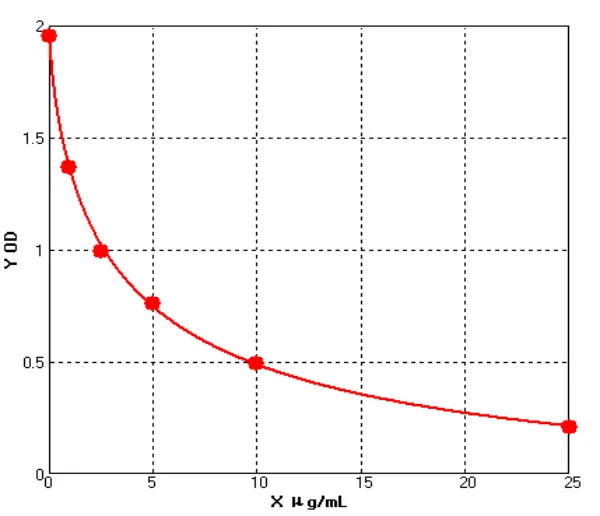
-
Mouse Motilin ELISA kit (E03M0347)MANUAL
Cat. No.: E03M0347
Detection Range: 50-1000poml/L
Reactivity: Mouse
Sensitivity: 1.0poml/L
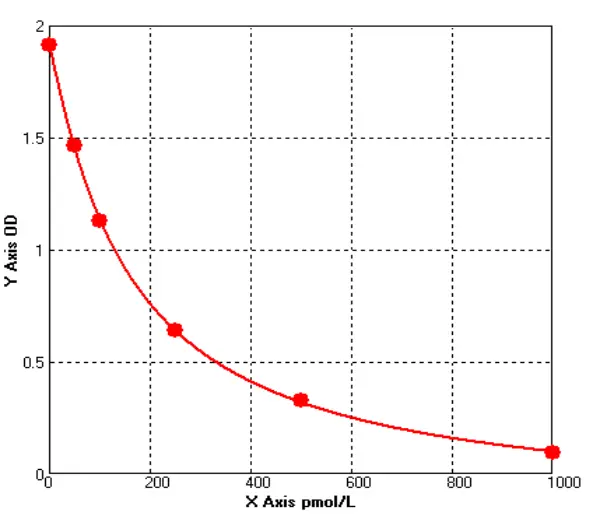
-
Mouse Syndecan 1 ELISA kit (E03S0301)MANUAL
Cat. No.: E03S0301
Detection Range: 50-1000pg/ml
Reactivity: Mouse
Sensitivity: 1.0pg/ml

-
Mouse Triglyceride ELISA kit (E03T0018)MANUAL
Cat. No.: E03T0018
Detection Range: 50-1000ug/ml
Reactivity: Mouse
Sensitivity: 1.0ug/ml
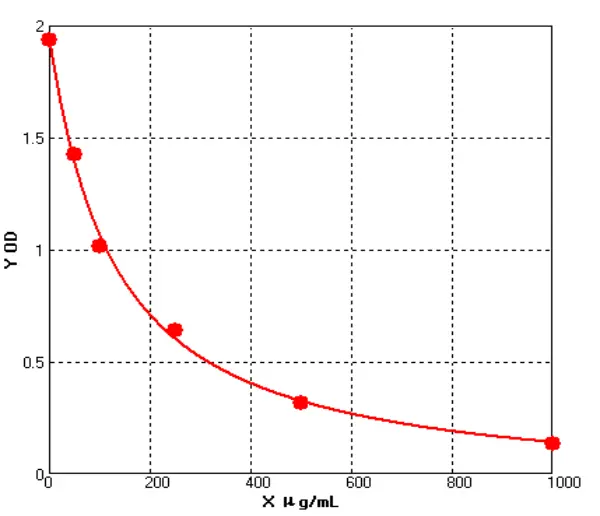
-
Mouse Creatinine ELISA kit (E03C0629)MANUAL
Cat. No.: E03C0629
Detection Range: 25-500μmol/L
Reactivity: Mouse
Sensitivity: 1.0μmol/L
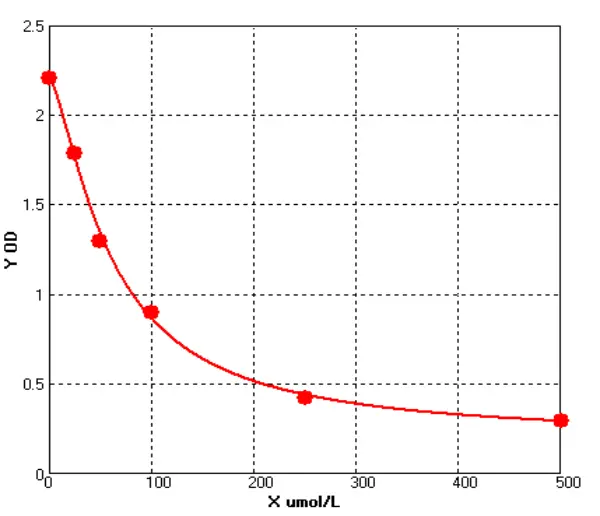
-
Mouse Anti Smooth Muscle Antibody ELISA kit (E03A0436)MANUAL
Cat. No.: E03A0436
Detection Range: 50-100ng/ml
Reactivity: Mouse
Sensitivity: 1.0ng/ml
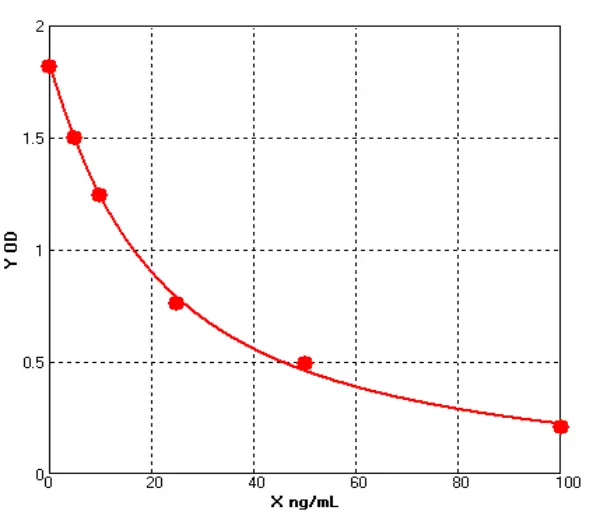
-
Mouse Deoxypyridinoline ELISA kit (E03D0033)MANUAL
Cat. No.: E03D0033
Detection Range: 25-500nmol/L
Reactivity: Mouse
Sensitivity: 1.0nmol/L
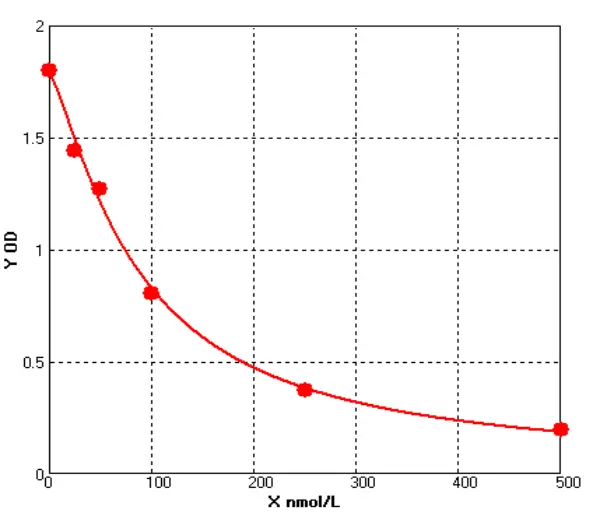
-
Mouse Stromal Cell Derived Fctor 1Alpha ELISA kit (E03S0006)MANUAL
Cat. No.: E03S0006
Detection Range: 0.5-10ng/ml
Reactivity: Mouse
Sensitivity: 0.1ng/ml
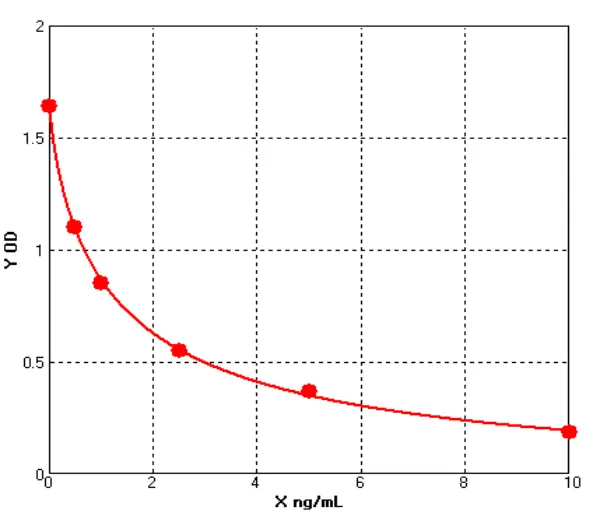
-
Mouse Immunoglobulin G1 ELISA kit (E03I0063)MANUAL
Cat. No.: E03I0063
Detection Range: 0.5-10mg/ml
Reactivity: Mouse
Sensitivity: 0.1mg/ml
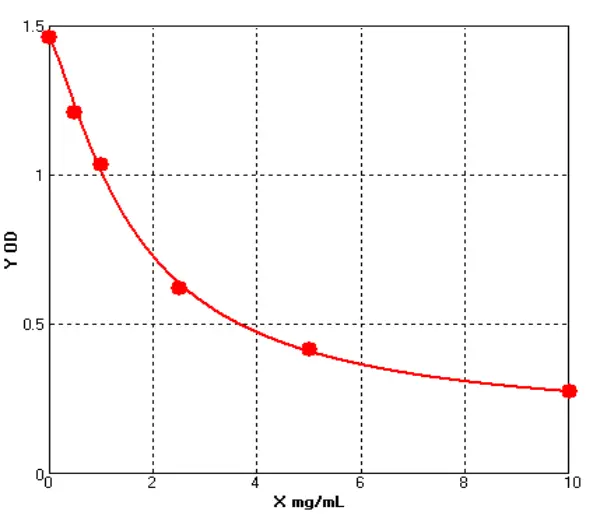
-
Mouse Glycated Hemoglobin A1c ELISA kit (E03G0322)MANUAL
Cat. No.: E03G0322
Detection Range: 25-500ug/ml
Reactivity: Mouse
Sensitivity: 1.0ug/ml
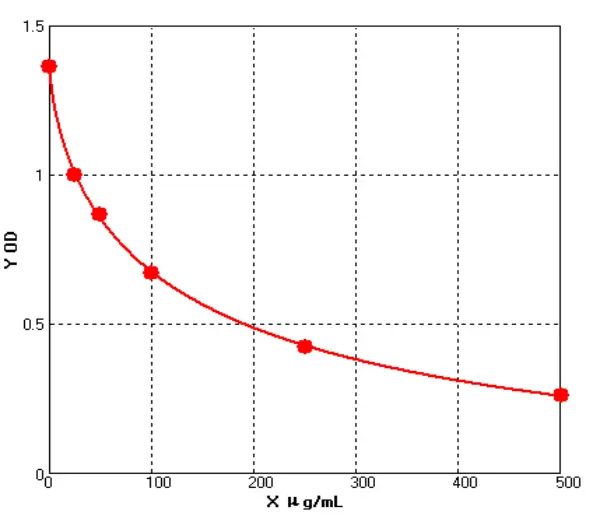
-
Mouse Anti Soluble Liver Antigen ELISA kit (E03S0263)MANUAL
Cat. No.: E03S0263
Detection Range: 5-100ng/ml
Reactivity: Mouse
Sensitivity: 1.0ng/ml

-
Mouse Arachidonic Acid ELISA kit (E03A0690)MANUAL
Cat. No.: E03A0690
Detection Range: 100-2500pg/ml
Reactivity: Mouse
Sensitivity: 1.0pg/ml
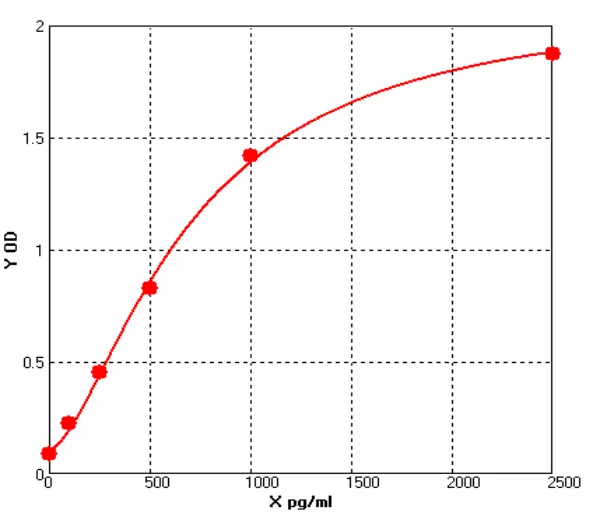
-
Mouse Eosinophil Cationic Protein ELISA kit (E03E0125)MANUAL
Cat. No.: E03E0125
Detection Range: 1.0-25ng/mL
Reactivity: Mouse
Sensitivity: 0.1 ng/mL
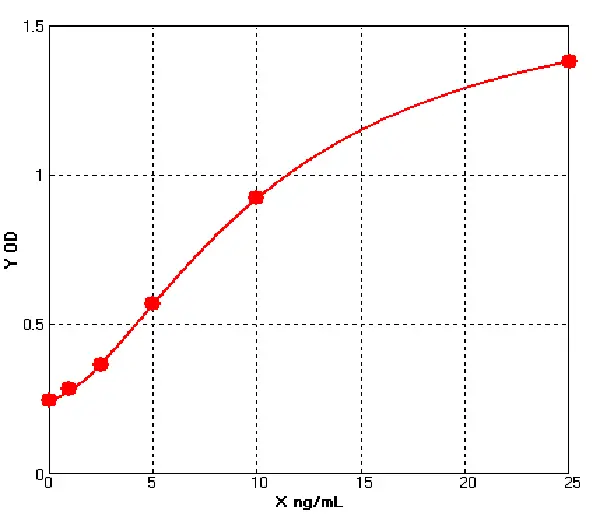
-
Mouse Fatty Acid Synthase ELISA kit (E03F0043)MANUAL
Cat. No.: E03F0043
Detection Range: 5-100ug/ml
Reactivity: Mouse
Sensitivity: 1.0ug/ml
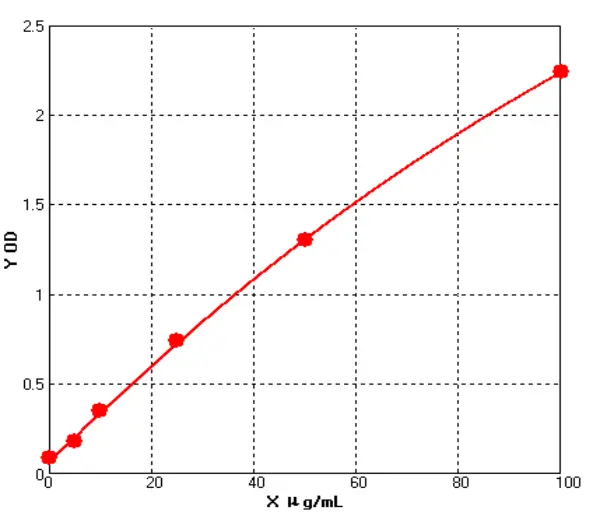
-
Mouse Procollagen Type III ELISA kit (E03P0047)MANUAL
Cat. No.: E03P0047
Detection Range: 5-100ng/ml
Reactivity: Mouse
Sensitivity: 1.0ng/ml
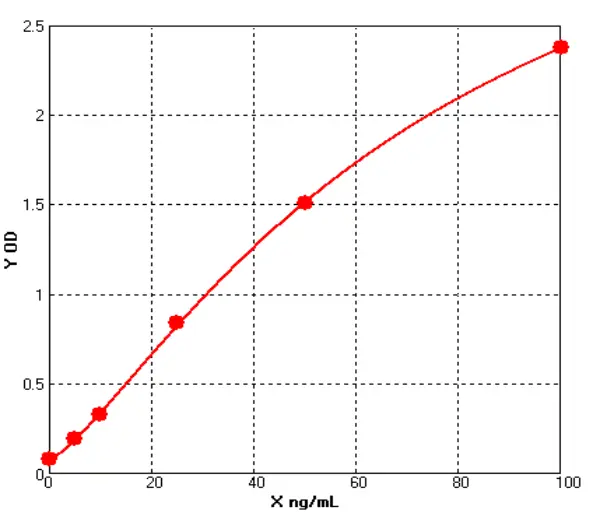
-
Mouse Lipopolysaccharides ELISA kit (E03L0268)MANUAL
Cat. No.: E03L0268
Detection Range: 50-1000ng/mL
Reactivity: Mouse
Sensitivity: 1.0ng/mL
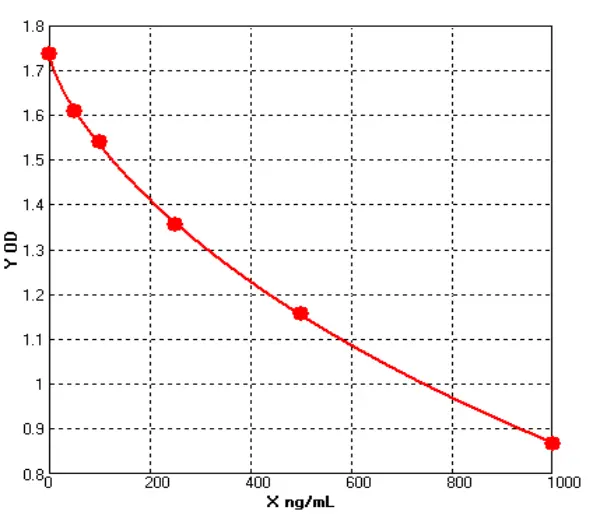
-
Mouse Anti Double Stranded DNA ELISA kit (E03D0004)MANUAL
Cat. No.: E03D0004
Detection Range: 50-1000ng/ml
Reactivity: Mouse
Sensitivity: 1.0ng/ml
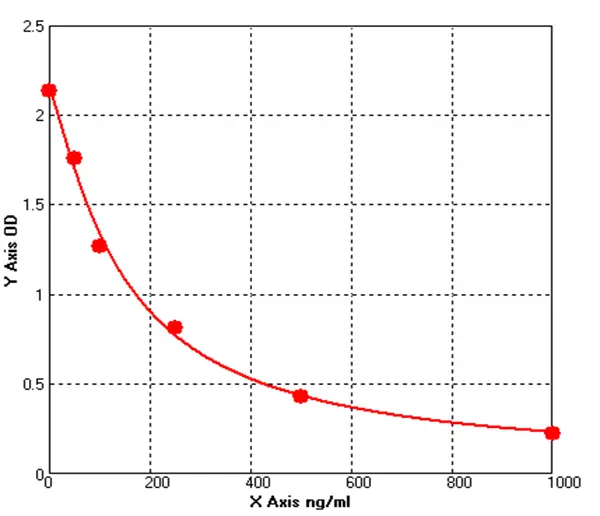
-
Mouse Anti Histone Antibody ELISA kit (E03A0449)MANUAL
Cat. No.: E03A0449
Detection Range: 50-1000ng/ml
Reactivity: Mouse
Sensitivity: 1.0ng/ml

-
Mouse Apolipoprotein B ELISA kit (E03A0513)MANUAL
Cat. No.: E03A0513
Detection Range: 2.5-50ug/ml
Reactivity: Mouse
Sensitivity: 0.1ug/ml
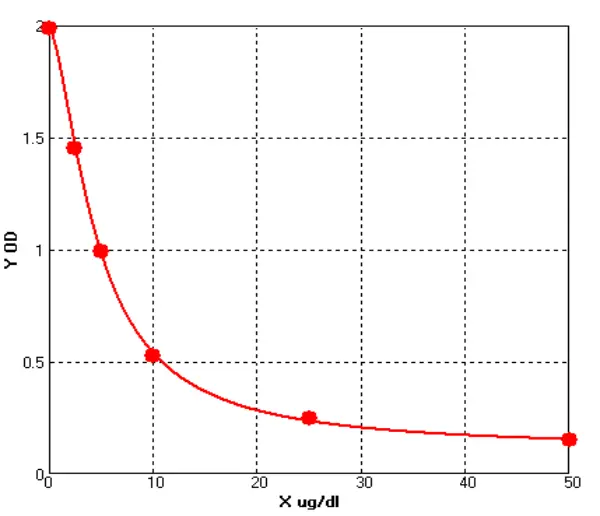
-
Mouse Apolipoprotein A1 ELISA kit (E03A0509)MANUAL
Cat. No.: E03A0509
Detection Range: 5-100ug/ml
Reactivity: Mouse
Sensitivity: 1.0ug/ml
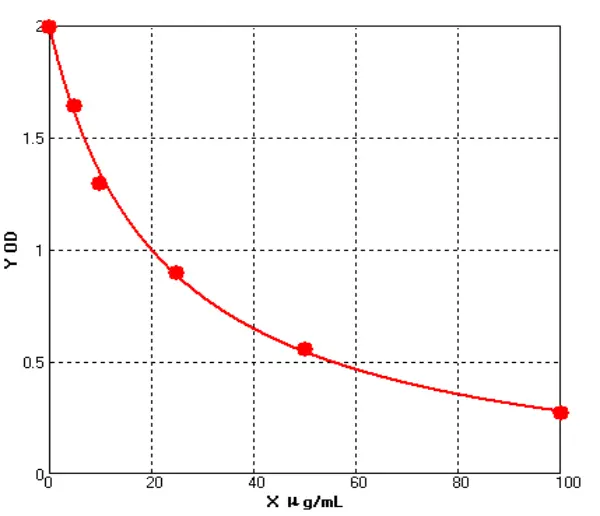
-
Mouse Laminin ELISA kit (E03L0018)MANUAL
Cat. No.: E03L0018
Detection Range: 50-1000pg/ml
Reactivity: Mouse
Sensitivity: 1.0pg/ml
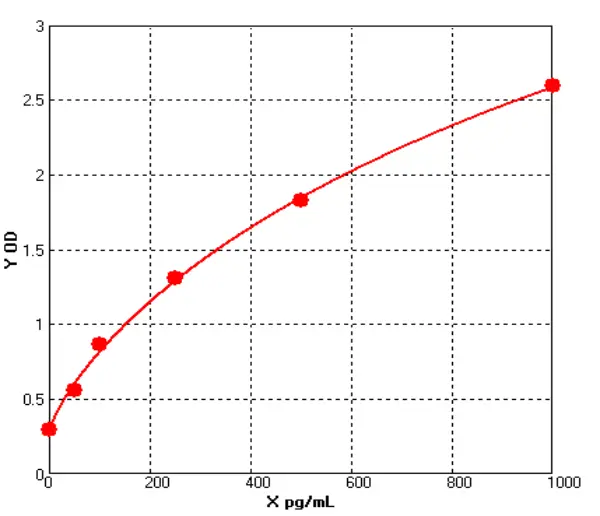
-
Mouse Von Willebrand Factor ELISA kit (E03V0001)MANUAL
Cat. No.: E03V0001
Detection Range: 2.5-50ng/mL
Reactivity: Mouse
Sensitivity: 0.1ng/mL
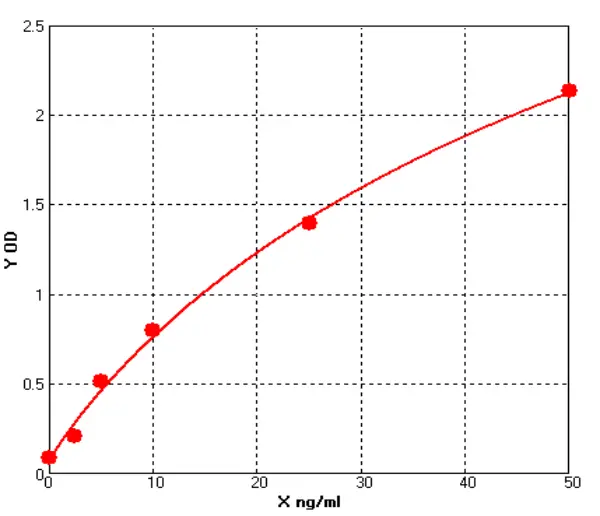
-
Mouse Proteolipid Protein 1, Myelin ELISA kit (E03P0129)MANUAL
Cat. No.: E03P0129
Detection Range: 2.5-50ng/mL
Reactivity: Mouse
Sensitivity: 0.1ng/mL

-
Mouse Hyaluronic Acid ELISA kit (E03H0029)MANUAL
Cat. No.: E03H0029
Detection Range: 2.5-50ng/mL
Reactivity: Mouse
Sensitivity: 0.1ng/mL

-
Mouse Interleukin 18 ELISA kit (E03I0310)MANUAL
Cat. No.: E03I0310
Detection Range: 50-1000pg/ml
Reactivity: Mouse
Sensitivity: 1.0pg/ml

-
Mouse Substance P ELISA kit (E03S0009)MANUAL
Cat. No.: E03S0009
Detection Range: 50-1000pg/ml
Reactivity: Mouse
Sensitivity: 1.0pg/ml

-
Mouse CXC Chemokine Ligand 16 ELISA kit (E03C0851)MANUAL
Cat. No.: E03C0851
Detection Range: 50-1000pg/ml
Reactivity: Mouse
Sensitivity: 1.0pg/ml

-
Mouse Leukotriene C4 ELISA kit (E03L0036)MANUAL
Cat. No.: E03L0036
Detection Range: 50-1000pg/ml
Reactivity: Mouse
Sensitivity: 1.0pg/ml

-
Mouse Melatonin ELISA kit (E03M0005)MANUAL
Cat. No.: E03M0005
Detection Range: 50-1000pg/ml
Reactivity: Mouse
Sensitivity: 1.0pg/ml

-
Mouse Cyclic Adenosine Monophosphate ELISA kit (E03C0027)MANUAL
Cat. No.: E03C0027
Detection Range: 50-1000pmol/ml
Reactivity: Mouse
Sensitivity: 1.0pmol/ml
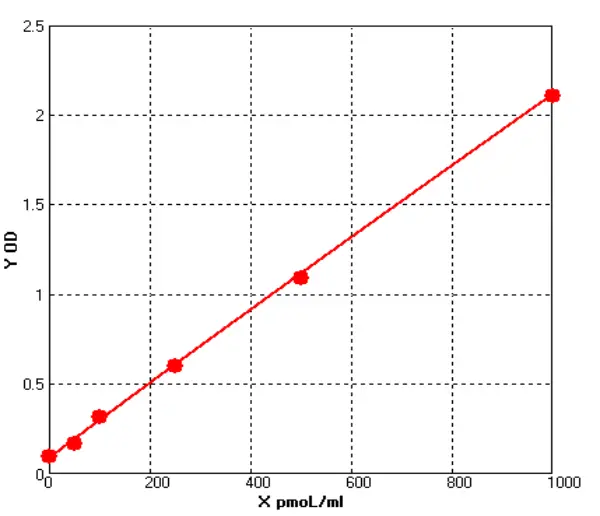
-
Mouse Oxidized Lowdensity Lipoprotein ELISA kit (E03O0341)MANUAL
Cat. No.: E03O0341
Detection Range: 5-100ug/ml
Reactivity: Mouse
Sensitivity: 1.0ug/ml

-
Mouse Aldehyde Dehydrogenase Family 1 Member A3 ELISA kit (E03A0523)MANUAL
Cat. No.: E03A0523
Detection Range: 1.0-25ng/ml
Reactivity: Mouse
Sensitivity: 0.1ng/ml
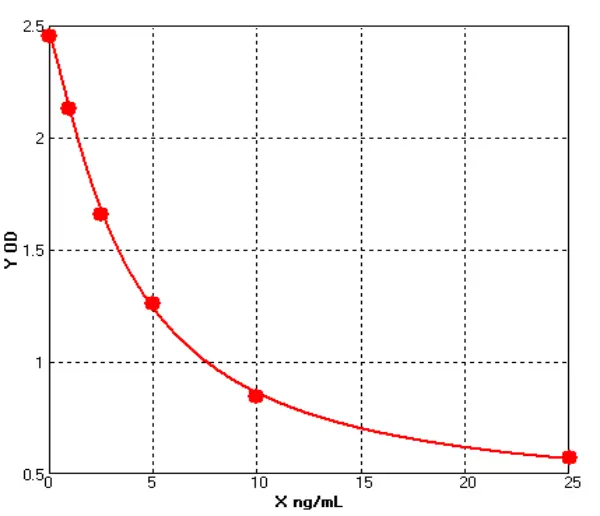
-
Mouse Soluble Endothelial Protein C Receptor ELISA kit (E03S0249)MANUAL
Cat. No.: E03S0249
Detection Range: 25-500ng/mL
Reactivity: Mouse
Sensitivity: 1.0ng/mL
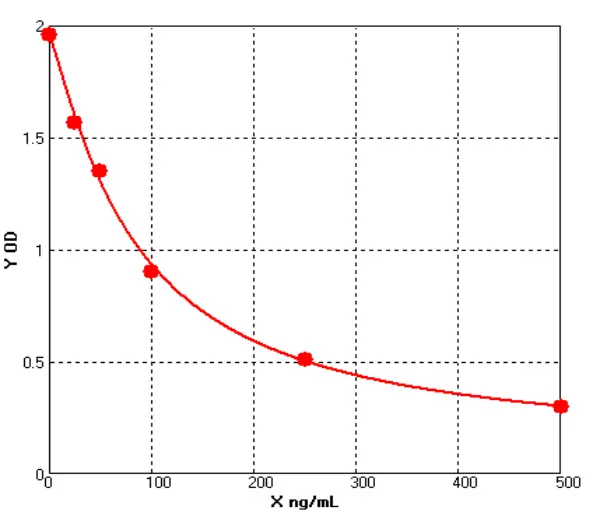
-
Mouse Ubiquitin ELISA kit (E03U0007)MANUAL
Cat. No.: E03U0007
Detection Range: 25-500ng/mL
Reactivity: Mouse
Sensitivity: 1.0ng/mL

-
Mouse Prostaglandin H2 ELISA kit (E03P0648)MANUAL
Cat. No.: E03P0648
Detection Range: 25-500ng/mL
Reactivity: Mouse
Sensitivity: 1.0ng/mL

-
Mouse Wlims'tumor-1 ELISA kit (E03W0020)MANUAL
Cat. No.: E03W0020
Detection Range: 1.0-25ng/ml
Reactivity: Mouse
Sensitivity: 0.1ng/ml

-
Mouse Lipoprotein Lipase ELISA kit (E03L0001)MANUAL
Cat. No.: E03L0001
Detection Range: 10-250ng/ml
Reactivity: Mouse
Sensitivity: 1.0ng/ml

-
Mouse Adipose Triglyceride Lipase ELISA kit (E03A0893)MANUAL
Cat. No.: E03A0893
Detection Range: 10-250 ng/mL
Reactivity: Mouse
Sensitivity: 1.0ng/mL

-
Mouse Endothelial Lipase ELISA kit (E03E0137)MANUAL
Cat. No.: E03E0137
Detection Range: 10-250 ng/mL
Reactivity: Mouse
Sensitivity: 1.0 ng/mL

-
Mouse Heparanase ELISA kit (E03H0100)MANUAL
Cat. No.: E03H0100
Detection Range: 250-5000pg/ml
Reactivity: Mouse
Sensitivity: 1.0pg/ml
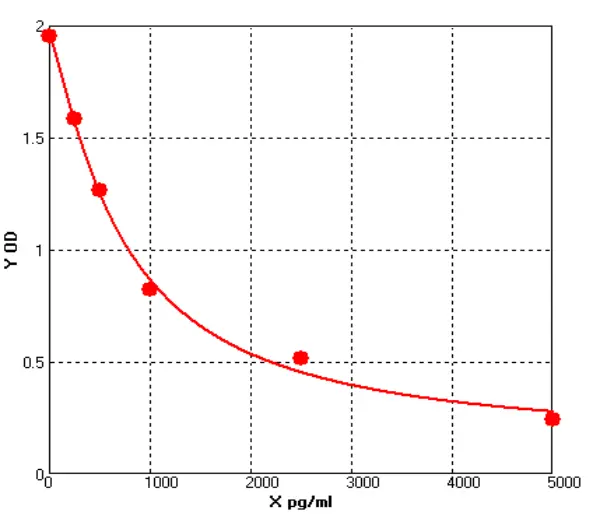
-
Mouse Thioredoxin ELISA kit (E03T0336)MANUAL
Cat. No.: E03T0336
Detection Range: 250-5000pg/ml
Reactivity: Mouse
Sensitivity: 1.0pg/ml

-
Mouse Trefoil Factor 3, Intestinal ELISA kit (E03T0133)MANUAL
Cat. No.: E03T0133
Detection Range: 250-5000pg/ml
Reactivity: Mouse
Sensitivity: 1.0pg/ml

-
Mouse Lactoferrin ELISA kit (E03L0224)MANUAL
Cat. No.: E03L0224
Detection Range: 250-5000pg/ml
Reactivity: Mouse
Sensitivity: 1.0pg/ml

-
Mouse Lecithin Cholesterol Acyltransferase ELISA kit (E03L0303)MANUAL
Cat. No.: E03L0303
Detection Range: 250-5000pg/ml
Reactivity: Mouse
Sensitivity: 1.0pg/ml

-
Mouse Ciliary Neurotrophic Factor ELISA kit (E03C0777)MANUAL
Cat. No.: E03C0777
Detection Range: 250-5000pg/ml
Reactivity: mouse
Sensitivity: 1.0pg/ml

-
Mouse Total Bile Acide ELISA kit (E03T0504)MANUAL
Cat. No.: E03T0504
Detection Range: 0.5-10umol/L
Reactivity: Mouse
Sensitivity: 0.1umol/L
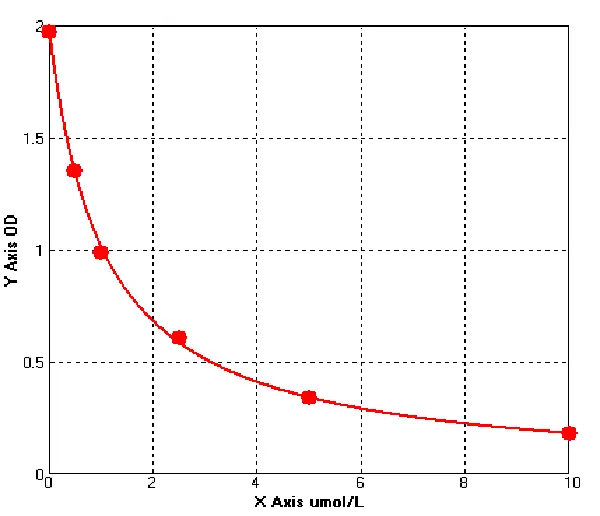
-
Mouse FOS Like Antigen 1 ELISA kit (E03F0013)MANUAL
Cat. No.: E03F0013
Detection Range: 5-100ng/ml
Reactivity: Mouse
Sensitivity: 1.0ng/ml
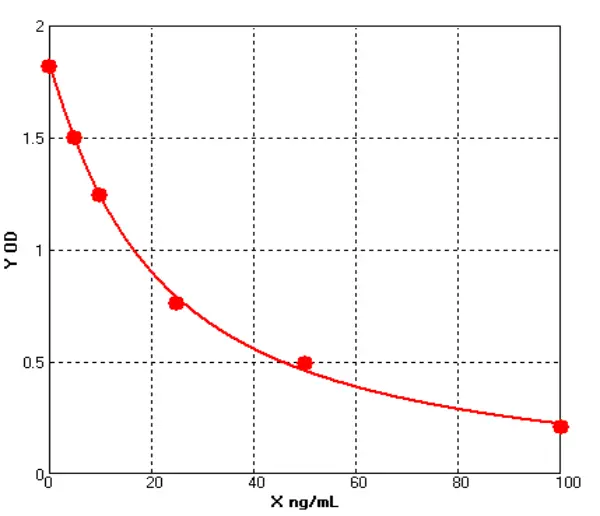
-
Mouse Methylglyoxal ELISA kit (E03M0040)MANUAL
Cat. No.: E03M0040
Detection Range: 5.0-100ng/ml
Reactivity: Mouse
Sensitivity: 1.0ng/mL

-
Mouse Cholesterol ELISA kit (E03C0745)MANUAL
Cat. No.: E03C0745
Detection Range: 0.5-10mmoL/L
Reactivity: Mouse
Sensitivity: 0.1mmoL/L
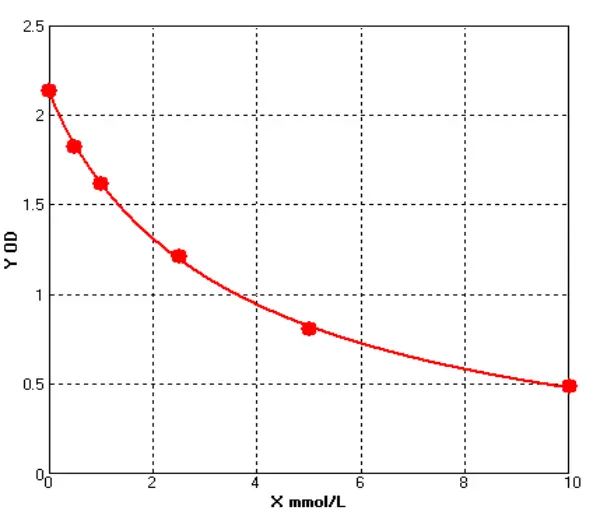
-
Mouse Blood Urea Nitrogen ELISA kit (E03B0697)MANUAL
Cat. No.: E03B0697
Detection Range: 0.5-10mmoL/L
Reactivity: Mouse
Sensitivity: 0.1mmoL/L

-
Mouse Insulin ELISA kit (E03I0004)MANUAL
Cat. No.: E03I0004
Detection Range: 0.5-10ng/ml
Reactivity: Mouse
Sensitivity: 0.1ng/ml

-
Mouse Immunoglobulin G ELISA kit (E03I0058)
Cat. No.: E03I0058
Detection Range: 50-1000ug/ml
Reactivity: Mouse
Sensitivity: 1.0ug/ml

-
Mouse Free Fatty Acid ELISA kit (E03F0002)MANUAL
Cat. No.: E03F0002
Detection Range: 50-1000ug/ml
Reactivity: Mouse
Sensitivity: 1.0ug/ml

-
Mouse Immunoglobulin D ELISA kit (E03I0059)MANUAL
Cat. No.: E03I0059
Detection Range: 50-1000ug/ml
Reactivity: Mouse
Sensitivity: 1.0ug/ml

-
Mouse Corticosterone ELISA kit (E03C0006)MANUAL
Cat. No.: E03C0006
Detection Range: 25-500ng/mL
Reactivity: Mouse
Sensitivity: 1.0ng/mL

-
Mouse β Cell Leukemia ELISA kit (E03B0033)MANUAL
Cat. No.: E03B0033
Detection Range: 25-500pg/mL
Reactivity: Mouse
Sensitivity: 1.0pg/mL
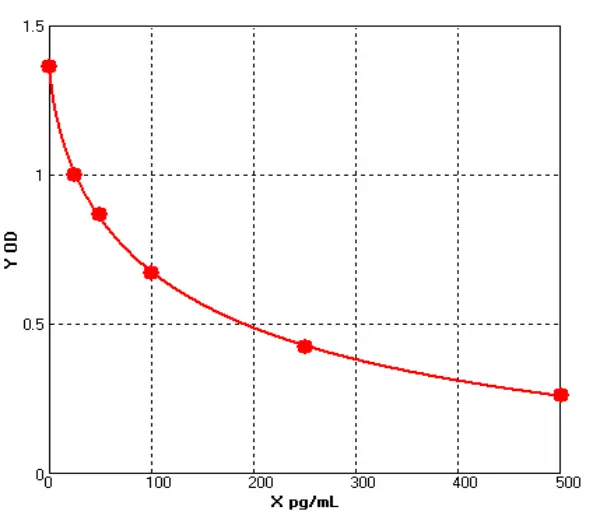
-
Mouse Helicobacter Pylori IgG ELISA kit (E03H0268)MANUAL
Cat. No.: E03H0268
Detection Range: 25-500ng/mL
Reactivity: Mouse
Sensitivity: 1.0ng/mL

-
Mouse High Density Lipoprotein ELISA kit (E03H0211)MANUAL
Cat. No.: E03H0211
Detection Range: 25-500ng/mL
Reactivity: Mouse
Sensitivity: 1.0ng/mL

-
Mouse Hepcidin ELISA kit (E03H0051)MANUAL
Cat. No.: E03H0051
Detection Range: 25-500ng/mL
Reactivity: Mouse
Sensitivity: 1.0ng/mL

-
Mouse Superoxide Dismutase 1 ELISA kit (E03S0391)
Cat. No.: E03S0391
Detection Range: 1.0-25μg/ml
Reactivity: Mouse
Sensitivity: 0.1μg/ml

-
Mouse Activated Protein C ELISA kit (E03A0842)MANUAL
Cat. No.: E03A0842
Detection Range: 25-500pg/mL
Reactivity: Mouse
Sensitivity: 1.0pg/mL

-
Mouse Calcitonin ELISA kit (E03C0404)MANUAL
Cat. No.: E03C0404
Detection Range: 25-500pg/mL
Reactivity: Mouse
Sensitivity: 1.0pg/mL

-
Mouse Gastrin ELISA kit (E03G0281)MANUAL
Cat. No.: E03G0281
Detection Range: 25-500pg/mL
Reactivity: Mouse
Sensitivity: 1.0pg/mL

-
Mouse Ghrelin ELISA kit (E03G0013)MANUAL
Cat. No.: E03G0013
Detection Range: 25-500pg/mL
Reactivity: Mouse
Sensitivity: 1.0pg/mL

-
Mouse C Reactive Protein ELISA kit (E03C0009)MANUAL
Cat. No.: E03C0009
Detection Range: 1.0-25μg/ml
Reactivity: Mouse
Sensitivity: 0.1μg/ml

-
Mouse Ovalbumin Specific Immunoglobulin E ELISA kit (E03O0012)MANUAL
Cat. No.: E03O0012
Detection Range: 1.0-25μg/ml
Reactivity: Mouse
Sensitivity: 0.1μg/ml

-
Mouse Superoxide Dismutase 2, Mitochondrial ELISA kit (E03S0144)MANUAL
Cat. No.: E03S0144
Detection Range: 0.5-10μg/ml
Reactivity: Mouse
Sensitivity: 0.1μg/ml
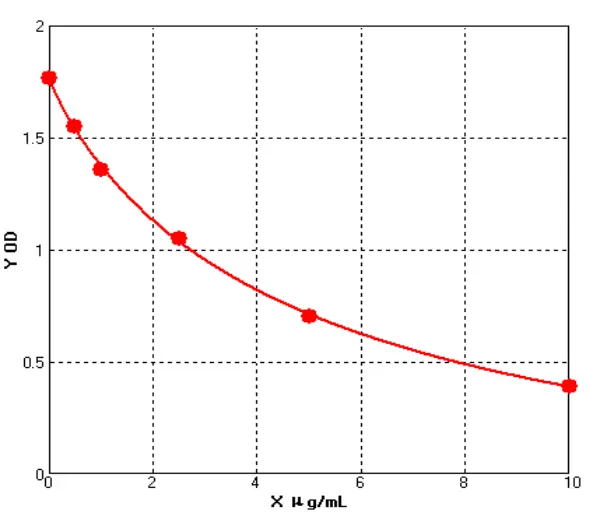
-
Mouse Superoxide Dismutase ELISA kit (E03S0012)MANUAL
Cat. No.: E03S0012
Detection Range: 0.5-10μg/ml
Reactivity: Mouse
Sensitivity: 0.1μg/ml

-
Mouse Stathmin 1 ELISA kit (E03S0217)MANUAL
Cat. No.: E03S0217
Detection Range: 0.5-10ng/ml
Reactivity: Mouse
Sensitivity: 0.1ng/ml

-
Mouse Phosphorylated AKT1 Kinase ELISA kit (E03P1047)MANUAL
Cat. No.: E03P1047
Detection Range: 0.5-10ng/ml
Reactivity: Mouse
Sensitivity: 0.1ng/ml

-
Mouse Matrix Metalloproteinase 9 ELISA kit (E03M0329)MANUAL
Cat. No.: E03M0329
Detection Range: 1.0-25ng/ml
Reactivity: Mouse
Sensitivity: 0.1ng/ml
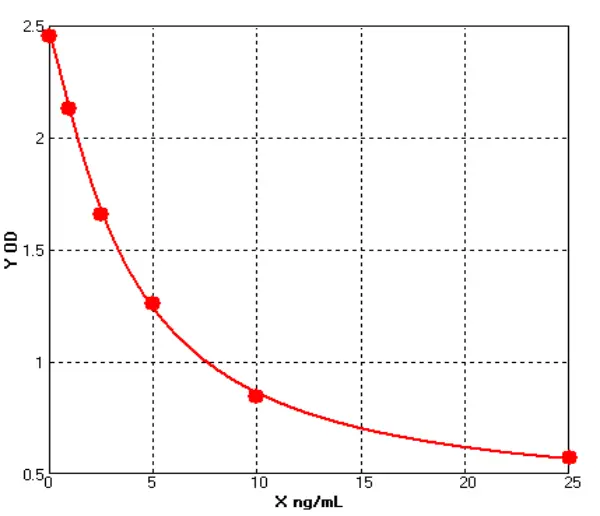
-
Mouse Toll Like Receptor4 ELISA kit (E03T0069)MANUAL
Cat. No.: E03T0069
Detection Range: 0.5-10ng/ml
Reactivity: Mouse
Sensitivity: 0.1ng/ml

-
Mouse Coiled Coil Myosin Like BCL2 Interacting Protein ELISA kit (E03C1217)MANUAL
Cat. No.: E03C1217
Detection Range: 0.5-10ng/ml
Reactivity: Mouse
Sensitivity: 0.1ng/ml

-
Mouse Serum Albumin ELISA kit (E03S0014)MANUAL
Cat. No.: E03S0014
Detection Range: 50-1000ng/mL
Reactivity: Mouse
Sensitivity: 1.0ng/mL

-
Mouse C Peptide ELISA kit (E03C0042)MANUAL
Cat. No.: E03C0042
Detection Range: 50-1000ng/mL
Reactivity: Mouse
Sensitivity: 1.0ng/mL

-
Mouse Collagen Type IV ELISA kit (E03C0047)MANUAL
Cat. No.: E03C0047
Detection Range: 50-1000ng/mL
Reactivity: Mouse
Sensitivity: 1.0ng/mL

-
Mouse Collagen Type I ELISA kit (E03C0014)MANUAL
Cat. No.: E03C0014
Detection Range: 50-1000ng/mL
Reactivity: Mouse
Sensitivity: 1.0ng/mL

-
Mouse Low Density Lipoprotein ELISA kit (E03L0020)MANUAL
Cat. No.: E03L0020
Detection Range: 50-1000ng/mL
Reactivity: Mouse
Sensitivity: 1.0ng/mL

-
Mouse N Terminal Pro Brain Natriuretic Peptide ELISA kit (E03N0008)MANUAL
Cat. No.: E03N0008
Detection Range: 100-2500pg/ml
Reactivity: Mouse
Sensitivity: 1.0pg/ml

-
Mouse Procollagen Type Ⅰ N Terminal Propeptide ELISA kit (E03P0578)MANUAL
Cat. No.: E03P0578
Detection Range: 100-2500pg/ml
Reactivity: Mouse
Sensitivity: 1.0pg/ml

-
Mouse Dihydrotestosterone ELISA kit (E03D0001)MANUAL
Cat. No.: E03D0001
Detection Range: 100-2500pg/ml
Reactivity: Mouse
Sensitivity: 1.0pg/ml

-
Mouse Endotoxin ELISA kit (E03E0134)
Cat. No.: E03E0134
Detection Range: 100-2500pg/ml
Reactivity: Mouse
Sensitivity: 1.0pg/ml

-
Mouse Gamma Aminobutyric Acid ELISA kit (E03G0074)MANUAL
Cat. No.: E03G0074
Detection Range: 100-2500pg/ml
Reactivity: Mouse
Sensitivity: 1.0pg/ml

-
Mouse Mast Cell Tryptase ELISA kit (E03M0256)MANUAL
Cat. No.: E03M0256
Detection Range: 100-2500pg/ml
Reactivity: Mouse
Sensitivity: 1.0pg/ml

-
Mouse Transforming Growth Factor Alpha ELISA kit (E03T0152)MANUAL
Cat. No.: E03T0152
Detection Range: 100-2500pg/ml
Reactivity: Mouse
Sensitivity: 1.0pg/ml

-
Mouse Secretory Immunoglobulin A ELISA kit (E03S0003)MANUAL
Cat. No.: E03S0003
Detection Range: 100-2500mg/L
Reactivity: Mouse
Sensitivity: 1.0mg/L
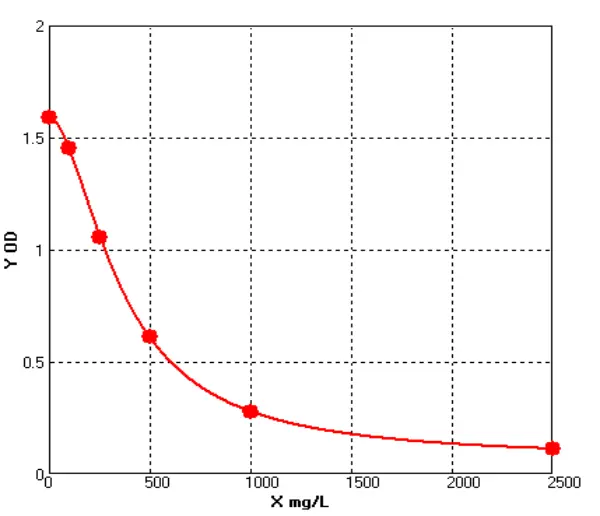
-
Mouse Transforming Growth Factor β ELISA kit (E03T0058)MANUAL
Cat. No.: E03T0058
Detection Range: 100-2500pg/ml
Reactivity: Mouse
Sensitivity: 1.0pg/ml

-
Mouse Transforming Growth Factor β1 ELISA kit (E03T0009)MANUAL
Cat. No.: E03T0009
Detection Range: 100-2500pg/ml
Reactivity: Mouse
Sensitivity: 1.0pg/ml

-
Mouse D Dimer ELISA kit (E03D0224)MANUAL
Cat. No.: E03D0224
Detection Range: 100-2500pg/ml
Reactivity: Mouse
Sensitivity: 1.0pg/ml

-
Mouse High Mobility Group Box1 Protein ELISA kit (E03H0009)MANUAL
Cat. No.: E03H0009
Detection Range: 5.0-100ng/ml
Reactivity: Mouse
Sensitivity: 1.0ng/ml

-
Mouse Thrombomodulin ELISA kit (E03T0229)MANUAL
Cat. No.: E03T0229
Detection Range: 100-2500pg/ml
Reactivity: Mouse
Sensitivity: 1.0pg/ml

-
Mouse Thrombopoietin ELISA kit (E03T0059)MANUAL
Cat. No.: E03T0059
Detection Range: 100-2500pg/ml
Reactivity: Mouse
Sensitivity: 1.0pg/ml

-
Mouse Dopamine ELISA kit (E03D0043)MANUAL
Cat. No.: E03D0043
Detection Range: 5.0-100ng/ml
Reactivity: Mouse
Sensitivity: 1.0ng/ml

-
Mouse Ferritin ELISA kit (E03F0010)MANUAL
Cat. No.: E03F0010
Detection Range: 5.0-100ng/ml
Reactivity: Mouse
Sensitivity: 1.0ng/ml

-
Mouse Histamine ELISA kit (E03H0013)MANUAL
Cat. No.: E03H0013
Detection Range: 5.0-100ng/ml
Reactivity: Mouse
Sensitivity: 1.0ng/ml

-
Mouse Indoleamine 2,3 Dioxygenase ELISA kit (E03I0057)MANUAL
Cat. No.: E03I0057
Detection Range: 5.0-100ng/ml
Reactivity: Mouse
Sensitivity: 1.0ng/ml

-
Mouse Inhibin Binding Protein ELISA kit (E03I0104)MANUAL
Cat. No.: E03I0104
Detection Range: 5.0-100ng/ml
Reactivity: Mouse
Sensitivity: 1.0ng/ml

-
Mouse Myeloperoxidase ELISA kit (E03M0032)MANUAL
Cat. No.: E03M0032
Detection Range: 5.0-100ng/ml
Reactivity: Mouse
Sensitivity: 1.0ng/ml

-
Mouse Neuraminidase ELISA kitMANUAL
Cat. No.: E03N0003
Detection Range: 5.0-100ng/ml
Reactivity: Mouse
Sensitivity: 1.0ng/ml

-
Mouse Thiobarbituric Acid Reactive Substance ELISA kit (E03T0886)MANUAL
Cat. No.: E03T0886
Detection Range: 5.0-100ng/ml
Reactivity: Mouse
Sensitivity: 1.0ng/ml

-
Mouse Serotonin/5 Hydroxytryptamine ELISA kit (E03H0106)MANUAL
Cat. No.: E03H0106
Detection Range: 5.0-100ng/ml
Reactivity: Mouse
Sensitivity: 1.0ng/ml

-
Mouse Transferrin ELISA kit (E03T0130)MANUAL
Cat. No.: E03T0130
Detection Range: 5.0-100ng/ml
Reactivity: Mouse
Sensitivity: 1.0ng/ml

-
Mouse Undercarboxylated Osteocalcin ELISA kit (E03U0008)MANUAL
Cat. No.: E03U0008
Detection Range: 5.0-100ng/ml
Reactivity: Mouse
Sensitivity: 1.0ng/ml

-
Mouse 8 Hydroxy 2 Desoxyguanosine ELISA kit (E03H0007)
Cat. No.: E03H0007
Detection Range: 5.0-100ng/ml
Reactivity: Mouse
Sensitivity: 1.0ng/ml

-
Mouse 8-Hydroxy-Desoxyguanosine ELISA kit (E03A0687)MANUAL
Cat. No.: E03A0687
Detection Range: 5.0-100ng/ml
Reactivity: Mouse
Sensitivity: 1.0ng/ml

-
Mouse 25 Hydroxyvitamin D3 ELISA kit (E03O0874)MANUAL
Cat. No.: E03O0874
Detection Range: 5.0-100ng/ml
Reactivity: Mouse
Sensitivity: 1.0ng/ml

-
Mouse Endostatin ELISA kit (E03E0003)MANUAL
Cat. No.: E03E0003
Detection Range: 5.0-100ng/ml
Reactivity: Mouse
Sensitivity: 1.0ng/ml

-
Mouse Lipocalin 2 ELISA kit (E03L0211)MANUAL
Cat. No.: E03L0211
Detection Range: 5.0-100ng/ml
Reactivity: Mouse
Sensitivity: 1.0ng/ml

-
Mouse Liver Kidney Microsome Autoantibody ELISA kit (E03L0238)MANUAL
Cat. No.: E03L0238
Detection Range: 5.0-100ng/ml
Reactivity: Mouse
Sensitivity: 1.0ng/ml

-
Mouse Purine Nucleoside Phosphorylase ELISA kit (E03P0618)MANUAL
Cat. No.: E03P0618
Detection Range: 5.0-100ng/ml
Reactivity: Mouse
Sensitivity: 1.0ng/ml

-
Mouse Soluble Transferrin Receptor ELISA kit (E03S0291)MANUAL
Cat. No.: E03S0291
Detection Range: 5.0-100ng/ml
Reactivity: Mouse
Sensitivity: 1.0ng/ml

-
Mouse 26S Proteasome ELISA kit (E03A0669)MANUAL
Cat. No.: E03A0669
Detection Range: 5.0-100ng/ml
Reactivity: Mouse
Sensitivity: 1.0ng/ml

-
Mouse Catalase ELISA kit (E03C0086)MANUAL
Cat. No.: E03C0086
Detection Range: 5.0-100ng/ml
Reactivity: Mouse
Sensitivity: 1.0ng/ml

-
Mouse Nuclear Factor Erythroid 2 Related Factor 2 ELISA kit (E03N0037)MANUAL
Cat. No.: E03N0037
Detection Range: 2.5-50ng/ml
Reactivity: Mouse
Sensitivity: 0.1ng/ml

-
Mouse Platelet Activating Factor Acetylhydrolase ELISA kit (E03P0573)MANUAL
Cat. No.: E03P0573
Detection Range: 2.5-50ng/ml
Reactivity: Mouse
Sensitivity: 0.1ng/ml

-
Mouse Prokineticin Receptor 2 ELISA kit (E03P0122)MANUAL
Cat. No.: E03P0122
Detection Range: 2.5-50ng/ml
Reactivity: Mouse
Sensitivity: 0.1ng/ml

-
Mouse Prostaglandin E2 ELISA kit (E03P0012)MANUAL
Cat. No.: E03P0012
Detection Range: 2.5-50ng/ml
Reactivity: Mouse
Sensitivity: 0.1ng/ml

-
Mouse Protein Kinase A ELISA kit (E03P0746)MANUAL
Cat. No.: E03P0746
Detection Range: 2.5-50ng/ml
Reactivity: Mouse
Sensitivity: 0.1ng/ml

-
Mouse Reduced Glutathione ELISA kit (E03G0367)MANUAL
Cat. No.: E03G0367
Detection Range: 2.5-50ng/ml
Reactivity: Mouse
Sensitivity: 0.1ng/ml

-
Mouse Aspartate Aminotransferase ELISA kit (E03A0626)MANUAL
Cat. No.: E03A0626
Detection Range: 1.0-25ng/ml
Reactivity: Mouse
Sensitivity: 0.1ng/ml

-
Mouse Toll Like Receptor 7 ELISA kit (E03T0070)MANUAL
Cat. No.: E03T0070
Detection Range: 0.5-10ng/ml
Reactivity: Mouse
Sensitivity: 0.1ng/ml

-
Mouse Toll Like Receptor 4 ELISA kit (E03T0069)
Cat. No.: E03T0069
Detection Range: 0.5-10ng/ml
Reactivity: Mouse
Sensitivity: 0.1ng/ml

-
Mouse Vascuoar Endothelial Cell Growth Factor Receptor 1 ELISA kit (E03V0038)MANUAL
Cat. No.: E03V0038
Detection Range: 0.5-10ng/ml
Reactivity: Mouse
Sensitivity: 0.1ng/ml

-
Mouse Cardiac Troponin I ELISA kit (E03T0016)MANUAL
Cat. No.: E03T0016
Detection Range: 0.5-10ng/ml
Reactivity: Mouse
Sensitivity: 0.1ng/ml

-
Mouse Cross Linked C Terminal Telopeptide of Type I Collagen ELISA kit (E03C0754)MANUAL
Cat. No.: E03C0754
Detection Range: 0.5-10ng/ml
Reactivity: Mouse
Sensitivity: 0.1ng/ml

-
Mouse Caspase 3 ELISA kit (E03C0549)MANUAL
Cat. No.: E03C0549
Detection Range: 0.5-10ng/ml
Reactivity: Mouse
Sensitivity: 0.1ng/ml

-
Mouse Cluster of Differentiation 8 ELISA kit (E03C0007)MANUAL
Cat. No.: E03C0007
Detection Range: 0.5-10ng/ml
Reactivity: Mouse
Sensitivity: 0.1ng/ml

-
Mouse Acetylcholine ELISA kit (E03A0711)MANUAL
Cat. No.: E03A0711
Detection Range: 0.5-10ng/ml
Reactivity: Mouse
Sensitivity: 0.1ng/ml

-
Mouse Cathelicidin Antimicrobial Peptide ELISA kit (E03C0333)MANUAL
Cat. No.: E03C0333
Detection Range: 0.5-10ng/ml
Reactivity: Mouse
Sensitivity: 0.1ng/ml

-
Mouse Claudin 4 ELISA kit (E03C0970)MANUAL
Cat. No.: E03C0970
Detection Range: 0.5-10ng/ml
Reactivity: Mouse
Sensitivity: 0.1ng/ml

-
Mouse Insulin Like Protein 5 ELISA kit (E03I0118)MANUAL
Cat. No.: E03I0118
Detection Range: 50-1000pg/ml
Reactivity: Mouse
Sensitivity: 1.0pg/ml

-
Mouse Lactose ELISA kit (E03L0230)MANUAL
Cat. No.: E03L0230
Detection Range: 50-1000pg/ml
Reactivity: Mouse
Sensitivity: 1.0pg/ml

-
Mouse Surfactant P ELISA kit (E03S0272)MANUAL
Cat. No.: E03S0272
Detection Range: 50-1000pg/ml
Reactivity: Mouse
Sensitivity: 1.0pg/ml

-
Mouse Total Tumor Necrosis Factor ELISA kit (E03T0034)MANUAL
Cat. No.: E03T0034
Detection Range: 50-1000pg/ml
Reactivity: Mouse
Sensitivity: 1.0pg/ml

-
Mouse BCL2 Associated X Protein ELISA kit (E03B0032)MANUAL
Cat. No.: E03B0032
Detection Range: 50-1000pg/ml
Reactivity: Mouse
Sensitivity: 1.0pg/ml

-
Mouse Vascular Endothelial Growth Factor ELISA kit (E03V0010)MANUAL
Cat. No.: E03V0010
Detection Range: 50-1000pg/ml
Reactivity: Mouse
Sensitivity: 1.0pg/ml

-
Mouse Cutaneous T Cell Attracting Chemokine ELISA kit (E03C0595)MANUAL
Cat. No.: E03C0595
Detection Range: 50-1000pg/ml
Reactivity: Mouse
Sensitivity: 1.0pg/ml

-
Mouse E2 Estradiol ELISA kit (E03E0023)MANUAL
Cat. No.: E03E0023
Detection Range: 50-1000pg/ml
Reactivity: Mouse
Sensitivity: 1.0pg/ml

-
Mouse Tumor Necrosis Factor Alpha ELISA kit (E03T0008)MANUAL
Cat. No.: E03T0008
Detection Range: 50-1000pg/ml
Reactivity: Mouse
Sensitivity: 1.0pg/ml

-
Mouse Corticotropin Releasing Hormone ELISA kit (E03P0031)MANUAL
Cat. No.: E03P0031
Detection Range: 50-1000pg/ml
Reactivity: Mouse
Sensitivity: 1.0pg/ml

-
Mouse Brain Natriuretic Peptide ELISA kit (E03B0452)MANUAL
Cat. No.: E03B0452
Detection Range: 50-1000pg/ml
Reactivity: Mouse
Sensitivity: 1.0pg/ml

-
Mouse Inhibin B ELISA kit (E03I0005)MANUAL
Cat. No.: E03I0005
Detection Range: 50-1000pg/ml
Reactivity: Mouse
Sensitivity: 1.0pg/ml

-
Mouse FAS Ligand ELISA kit (E03F0051)MANUAL
Cat. No.: E03F0051
Detection Range: 50-1000pg/ml
Reactivity: Mouse
Sensitivity: 1.0pg/ml

-
Mouse Granulocyte Colony Stimulating Factor ELISA kit (E03G0112)MANUAL
Cat. No.: E03G0112
Detection Range: 50-1000pg/ml
Reactivity: Mouse
Sensitivity: 1.0pg/ml

-
Mouse Growth Differentiation Factor 1 ELISA kit (E03G0118)MANUAL
Cat. No.: E03G0118
Detection Range: 50-1000pg/ml
Reactivity: Mouse
Sensitivity: 1.0pg/ml

-
Mouse Interleukin 5 ELISA kit (E03I0024)MANUAL
Cat. No.: E03I0024
Detection Range: 50-1000pg/ml
Reactivity: Mouse
Sensitivity: 1.0pg/ml

-
Mouse Interferon Alpha ELISA kit (E03I0343)MANUAL
Cat. No.: E03I0343
Detection Range: 50-1000pg/ml
Reactivity: Mouse
Sensitivity: 1.0pg/ml

-
Mouse Interferon β ELISA kit (E03I0344)MANUAL
Cat. No.: E03I0344
Detection Range: 50-1000pg/ml
Reactivity: Mouse
Sensitivity: 1.0pg/ml

-
Mouse Interleukin 10 ELISA kit (E03I0023)MANUAL
Cat. No.: E03I0023
Detection Range: 50-1000pg/ml
Reactivity: Mouse
Sensitivity: 1.0pg/ml

-
Mouse Interleukin 12 ELISA kit (E03I0033)MANUAL
Cat. No.: E03I0033
Detection Range: 50-1000pg/ml
Reactivity: Mouse
Sensitivity: 1.0pg/ml

-
Mouse Interleukin 13 ELISA kit (E03I0036)MANUAL
Cat. No.: E03I0036
Detection Range: 50-1000pg/ml
Reactivity: Mouse
Sensitivity: 1.0pg/ml

-
Mouse Interleukin 1β ELISA kit (E03I0010)MANUAL
Cat. No.: E03I0010
Detection Range: 50-1000pg/ml
Reactivity: Mouse
Sensitivity: 1.0pg/ml

-
Mouse Interleukin 2 ELISA kit (E03I0308)MANUAL
Cat. No.: E03I0308
Detection Range: 50-1000pg/ml
Reactivity: Mouse
Sensitivity: 1.0pg/ml

-
Mouse Interleukin 23 ELISA kit (E03I0374)MANUAL
Cat. No.: E03I0374
Detection Range: 50-1000pg/ml
Reactivity: Mouse
Sensitivity: 1.0pg/ml

-
Mouse Interleukin 33 ELISA kit (E03I0204)MANUAL
Cat. No.: E03I0204
Detection Range: 50-1000pg/ml
Reactivity: Mouse
Sensitivity: 1.0pg/ml

-
Mouse Interleukin 35 ELISA kit (E03I0389)MANUAL
Cat. No.: E03I0389
Detection Range: 50-1000pg/ml
Reactivity: Mouse
Sensitivity: 1.0pg/ml

-
Mouse Interleukin 6 ELISA kit (E03I0006)MANUAL
Cat. No.: E03I0006
Detection Range: 50-1000pg/ml
Reactivity: Mouse
Sensitivity: 1.0pg/ml

-
Mouse Interleukin 4 ELISA kit (E03I0007)MANUAL
Cat. No.: E03I0007
Detection Range: 50-1000pg/ml
Reactivity: Mouse
Sensitivity: 1.0pg/ml

-
Mouse Interleukin 8 ELISA kit (E03I0056)MANUAL
Cat. No.: E03I0056
Detection Range: 50-1000pg/ml
Reactivity: Mouse
Sensitivity: 1.0pg/ml

-
Mouse Klotho ELISA kit (E03K0027)MANUAL
Cat. No.: E03K0027
Detection Range: 50-1000pg/ml
Reactivity: Mouse
Sensitivity: 1.0pg/ml

-
Mouse Leukotriene B4 ELISA kit (E03L0037)MANUAL
Cat. No.: E03L0037
Detection Range: 50-1000pg/ml
Reactivity: Mouse
Sensitivity: 1.0pg/ml

-
Mouse Oxytocin ELISA kit (E03O0023)MANUAL
Cat. No.: E03O0023
Detection Range: 50-1000pg/ml
Reactivity: Mouse
Sensitivity: 1.0pg/ml

-
Mouse Macrophage MigRation Inhibitory Factor ELISA kit (E03M0209)MANUAL
Cat. No.: E03M0209
Detection Range: 50-1000pg/ml
Reactivity: Mouse
Sensitivity: 1.0pg/ml

-
Mouse Microtubule Associated Proteins 1A/1B Light Chain 3B ELISA kit (E03M0531)MANUAL
Cat. No.: E03M0531
Detection Range: 50-1000pg/ml
Reactivity: Mouse
Sensitivity: 1.0pg/ml

-
Mouse Monocyte Chemotactic Protein 1/Monocyte Chemotactic and Activating Factor ELISA kit (E03M0246)MANUAL
Cat. No.: E03M0246
Detection Range: 50-1000pg/ml
Reactivity: Mouse
Sensitivity: 1.0pg/ml

-
Mouse Osteoprotegerin ELISA kit (E03O0020)MANUAL
Cat. No.: E03O0020
Detection Range: 50-1000pg/ml
Reactivity: Mouse
Sensitivity: 1.0pg/ml

-
Mouse Secretoglobin, Family 1A, Member 1/Clara Cell Specific Protein CC16 ELISA kit (E03U0019)MANUAL
Cat. No.: E03U0019
Detection Range: 50-1000pg/ml
Reactivity: Mouse
Sensitivity: 1.0pg/ml

-
Mouse Parathyroid Hormone Related Protein ELISA kit (E03P0574)MANUAL
Cat. No.: E03P0574
Detection Range: 50-1000pg/ml
Reactivity: Mouse
Sensitivity: 1.0pg/ml

-
Mouse Fibroblast Growth Factor 7/Keratin Growth Factor ELISA kit (E03F0069)MANUAL
Cat. No.: E03F0069
Detection Range: 50-1000pg/ml
Reactivity: Mouse
Sensitivity: 1.0pg/ml

-
Mouse Receptor Activator of Nuclear Factor Kb Ligand ELISA kit (E03R0005)MANUAL
Cat. No.: E03R0005
Detection Range: 50-1000pg/ml
Reactivity: Mouse
Sensitivity: 1.0pg/ml

-
Mouse 1, 25 Dihydroxyvitamin D3 ELISA kit (E03D0002)MANUAL
Cat. No.: E03D0002
Detection Range: 50-1000pg/ml
Reactivity: Mouse
Sensitivity: 1.0pg/ml

-
Mouse Soluble Intercellular Adhesion Molecule 1 ELISA kit (E03S0258)MANUAL
Cat. No.: E03S0258
Detection Range: 2.5-50ng/ml
Reactivity: Mouse
Sensitivity: 0.1ng/ml

-
Mouse Transferrin Receptor ELISA kit (E03T0137)MANUAL
Cat. No.: E03T0137
Detection Range: 2.5-50ng/ml
Reactivity: Mouse
Sensitivity: 0.1ng/ml

-
Mouse Amylase Alpha 2, Pancreatic ELISA kit (E03A0475)MANUAL
Cat. No.: E03A0475
Detection Range: 2.5-50ng/ml
Reactivity: Mouse
Sensitivity: 0.1ng/ml

-
Mouse Zonula Occludens-1 ELISA kit (E03Z0036)MANUAL
Cat. No.: E03Z0036
Detection Range: 2.5-50ng/ml
Reactivity: Mouse
Sensitivity: 0.1ng/ml

-
Mouse Aldose Reductase ELISA kit (E03A0773)MANUAL
Cat. No.: E03A0773
Detection Range: 2.5-50ng/ml
Reactivity: Mouse
Sensitivity: 0.1ng/ml

-
Mouse Diacyl Glycerol ELISA kit (E03D0010)MANUAL
Cat. No.: E03D0010
Detection Range: 2.5-50ng/ml
Reactivity: Mouse
Sensitivity: 0.1ng/ml

-
Mouse Follicle Stimulating Hormone ELISA kit (E03F0001)MANUAL
Cat. No.: E03F0001
Detection Range: 2.5-50ng/ml
Reactivity: Mouse
Sensitivity: 0.1ng/ml

-
Mouse Glutathione Peroxidase ELISA kit (E03G0369)MANUAL
Cat. No.: E03G0369
Detection Range: 2.5-50ng/ml
Reactivity: Mouse
Sensitivity: 0.1ng/ml

-
Mouse Glutathione Peroxidase 4 ELISA kit (E03G0618)MANUAL
Cat. No.: E03G0618
Detection Range: 2.5-50ng/ml
Reactivity: Mouse
Sensitivity: 0.1ng/ml

-
Mouse High Sensitivity C Reactive Protein ELISA kit (E03C0087)MANUAL
Cat. No.: E03C0087
Detection Range: 2.5-50ng/ml
Reactivity: Mouse
Sensitivity: 0.1ng/ml

-
Mouse Inducible Nitric Oxide Synthase ELISA kit (E03I0396)MANUAL
Cat. No.: E03I0396
Detection Range: 2.5-50ng/ml
Reactivity: Mouse
Sensitivity: 0.1ng/ml

-
Mouse Leptin ELISA kit (E03L0038)MANUAL
Cat. No.: E03L0038
Detection Range: 2.5-50ng/ml
Reactivity: Mouse
Sensitivity: 0.1ng/ml

-
Mouse Luteinizing Hormone ELISA kit (E03L0021)MANUAL
Cat. No.: E03L0021
Detection Range: 2.5-50ng/ml
Reactivity: Mouse
Sensitivity: 0.1ng/ml

-
Mouse Fibronectin ELISA kit (E03F0004)MANUAL
Cat. No.: E03F0004
Detection Range: 0.5-10ng/ml
Reactivity: Mouse
Sensitivity: 0.1ng/ml

-
Mouse Phosphatidylinositol 3 Kinase ELISA kit (E03P0185)MANUAL
Cat. No.: E03P0185
Detection Range: 0.5-10ng/ml
Reactivity: Mouse
Sensitivity: 0.1ng/ml

-
Mouse Epididymal Secretory Glutathione Peroxidase ELISA kit (E03E0389)MANUAL
Cat. No.: E03E0389
Detection Range: 0.5-10ng/ml
Reactivity: Mouse
Sensitivity: 0.1ng/ml

-
Mouse Follistatin Like Protein 1 ELISA kit (E03F0385)MANUAL
Cat. No.: E03F0385
Detection Range: 0.5-10ng/ml
Reactivity: Mouse
Sensitivity: 0.1ng/ml

-
Mouse Cyclic AMP Response Element Binding Protein ELISA kit (E03C0552)MANUAL
Cat. No.: E03C0552
Detection Range: 0.5-10ng/ml
Reactivity: Mouse
Sensitivity: 0.1ng/ml

-
Mouse Autophagy Protein 5 ELISA kit (E03A1750)MANUAL
Cat. No.: E03A1750
Detection Range: 0.5-10ng/ml
Reactivity: Mouse
Sensitivity: 0.1ng/ml

-
Mouse Aquaporin 5 ELISA kit (E03A0870)MANUAL
Cat. No.: E03A0870
Detection Range: 0.5-10ng/ml
Reactivity: Mouse
Sensitivity: 0.1ng/ml

-
Mouse DNA Methyltransferase 1 ELISA kit (E03D0320)MANUAL
Cat. No.: E03D0320
Detection Range: 0.5-10ng/ml
Reactivity: Mouse
Sensitivity: 0.1ng/ml

-
Mouse Epidermal Growth Factor Receptor ELISA kit (E03E0129)MANUAL
Cat. No.: E03E0129
Detection Range: 0.5-10ng/ml
Reactivity: Mouse
Sensitivity: 0.1ng/ml

-
Mouse Gamma Glutamyltransferase 1 ELISA kit (E03G0160)MANUAL
Cat. No.: E03G0160
Detection Range: 0.5-10ng/ml
Reactivity: Mouse
Sensitivity: 0.1ng/ml

-
Mouse Glutathione Peroxidase 1 ELISA kit (E03G0234)MANUAL
Cat. No.: E03G0234
Detection Range: 0.5-10ng/ml
Reactivity: Mouse
Sensitivity: 0.1ng/ml

-
Mouse Hormone Sensitive Lipase ELISA kit (E03H0281)MANUAL
Cat. No.: E03H0281
Detection Range: 0.5-10ng/ml
Reactivity: Mouse
Sensitivity: 0.1ng/ml

-
Mouse Insulin Like Growth Factor Binding Protein 3 ELISA kit (E03I0074)MANUAL
Cat. No.: E03I0074
Detection Range: 0.5-10ng/ml
Reactivity: Mouse
Sensitivity: 0.1ng/ml

-
Mouse Malic Dehydrogenase ELISA kit (E03M0020)MANUAL
Cat. No.: E03M0020
Detection Range: 0.5-10ng/ml
Reactivity: Mouse
Sensitivity: 0.1ng/ml

-
Mouse Matrix Metalloproteinase 2 ELISA kit (E03M0304)MANUAL
Cat. No.: E03M0304
Detection Range: 0.5-10ng/ml
Reactivity: Mouse
Sensitivity: 0.1ng/ml

-
Mouse Metallothionein ELISA kit (E03M0030)MANUAL
Cat. No.: E03M0030
Detection Range: 0.5-10ng/ml
Reactivity: Mouse
Sensitivity: 0.1ng/ml

-
Mouse Osteoglycin ELISA kit (E03O0853)MANUAL
Cat. No.: E03O0853
Detection Range: 0.5-10ng/ml
Reactivity: Mouse
Sensitivity: 0.1ng/ml

-
Mouse Podocalyxin ELISA kit (E03P0069)MANUAL
Cat. No.: E03P0069
Detection Range: 0.5-10ng/ml
Reactivity: Mouse
Sensitivity: 0.1ng/ml

-
Mouse Protein Kinase C ELISA kit (E03P0668)MANUAL
Cat. No.: E03P0668
Detection Range: 0.5-10ng/ml
Reactivity: Mouse
Sensitivity: 0.1ng/ml

-
Mouse Testosterone ELISA kit (E03T0007)MANUAL
Cat. No.: E03T0007
Detection Range: 1.0-25ng/ml
Reactivity: Mouse
Sensitivity: 0.1ng/ml

-
Mouse Peroxisome Proliferators Activated Receptor γ ELISA kit (E03P0045)MANUAL
Cat. No.: E03P0045
Detection Range: 1.0-25ng/ml
Reactivity: Mouse
Sensitivity: 0.1ng/ml

-
Mouse sCD163/soluble Haemoglobin Scavenger Receptor ELISA kit (E03C0210)MANUAL
Cat. No.: E03C0210
Detection Range: 1.0-25ng/ml
Reactivity: Mouse
Sensitivity: 0.1ng/ml

-
Mouse Soluble Leptin Receptor ELISA kit (E03S0266)MANUAL
Cat. No.: E03S0266
Detection Range: 1.0-25ng/ml
Reactivity: Mouse
Sensitivity: 0.1ng/ml
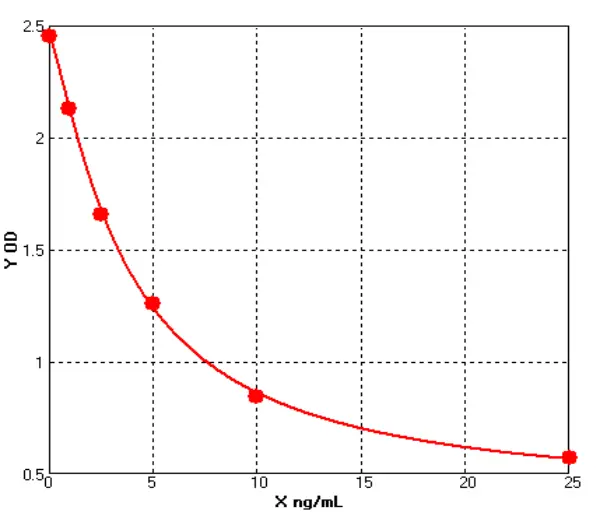
-
Mouse NLR Pyrin Domain Containing Proteins 3 ELISA kit (E03N0593)MANUAL
Cat. No.: E03N0593
Detection Range: 1.0-25ng/ml
Reactivity: Mouse
Sensitivity: 0.1ng/ml

-
Mouse Runt Related Transcription Factor 2 ELISA kit (E03R0098)MANUAL
Cat. No.: E03R0098
Detection Range: 1.0-25ng/ml
Reactivity: Mouse
Sensitivity: 0.1ng/ml

-
Mouse Procollagen Type I C Terminal Propeptide ELISA kit (E03P0015)MANUAL
Cat. No.: E03P0015
Detection Range: 1.0-25ng/ml
Reactivity: Mouse
Sensitivity: 0.1ng/ml

-
Mouse Nuclear Factor KB ELISA kit (E03N0011)MANUAL
Cat. No.: E03N0011
Detection Range: 1.0-25ng/ml
Reactivity: Mouse
Sensitivity: 0.1ng/ml

-
Mouse Osteocalcin ELISA kit (E03O0001)MANUAL
Cat. No.: E03O0001
Detection Range: 1.0-25ng/ml
Reactivity: Mouse
Sensitivity: 0.1ng/ml

-
Mouse Cyclooxygenase 2 ELISA kit (E03C0080)MANUAL
Cat. No.: E03C0080
Detection Range: 1.0-25ng/ml
Reactivity: Mouse
Sensitivity: 0.1ng/ml

-
Mouse Cardiac Troponin T ELISA kit (E03T0017)MANUAL
Cat. No.: E03T0017
Detection Range: 1.0-25ng/ml
Reactivity: Mouse
Sensitivity: 0.1ng/ml

-
Mouse Cytochrome P450 2D6 ELISA kit (E03C2242)MANUAL
Cat. No.: E03C2242
Detection Range: 1.0-25ng/ml
Reactivity: Mouse
Sensitivity: 0.1ng/ml
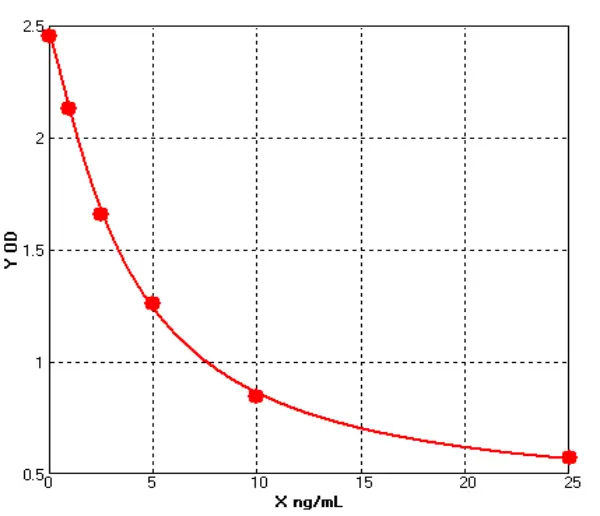
-
Mouse Toll Like Receptor 3 ELISA kit (E03T0066)MANUAL
Cat. No.: E03T0066
Detection Range: 0.5-10ng/ml
Reactivity: Mouse
Sensitivity: 0.1ng/ml
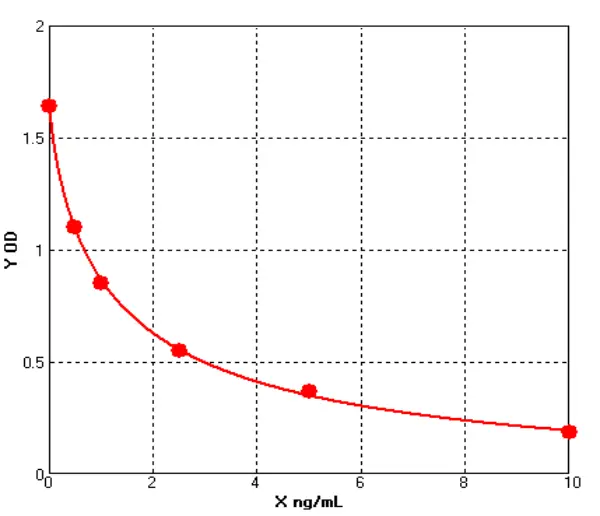
-
Mouse Apolipoprotein A4 ELISA kit (E03A0511)MANUAL
Cat. No.: E03A0511
Detection Range: 1.0-25ng/ml
Reactivity: Mouse
Sensitivity: 0.1ng/ml

-
Mouse Caspase 9 ELISA kit (E03C0096)MANUAL
Cat. No.: E03C0096
Detection Range: 1.0-25ng/ml
Reactivity: Mouse
Sensitivity: 0.1ng/ml

-
Mouse Cluster of Differentiation 4 ELISA kit (E03C0004)MANUAL
Cat. No.: E03C0004
Detection Range: 1.0-25ng/ml
Reactivity: Mouse
Sensitivity: 0.1ng/ml
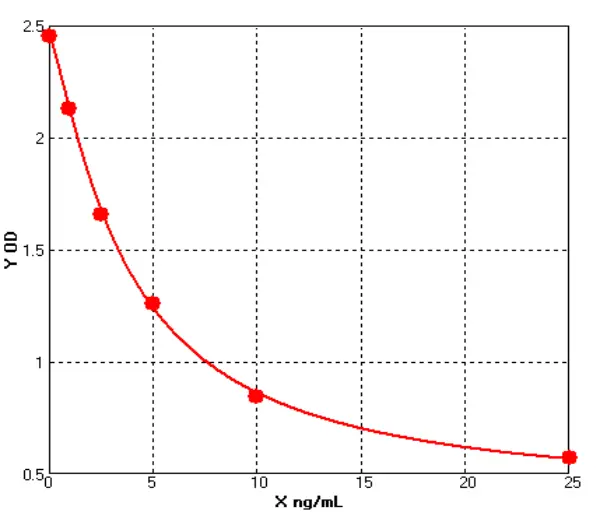
-
Mouse Cytochrome C Oxidase Subunit II ELISA kit (E03C0016)MANUAL
Cat. No.: E03C0016
Detection Range: 1.0-25ng/ml
Reactivity: Mouse
Sensitivity: 0.1ng/ml

-
Mouse Glutathione Reductase ELISA kit (E03G0238)MANUAL
Cat. No.: E03G0238
Detection Range: 1.0-25ng/ml
Reactivity: Mouse
Sensitivity: 0.1ng/ml

-
Mouse Glycogen Synthase Kinase 3 Alpha ELISA kit (E03G0264)MANUAL
Cat. No.: E03G0264
Detection Range: 1.0-25ng/ml
Reactivity: Mouse
Sensitivity: 0.1ng/ml
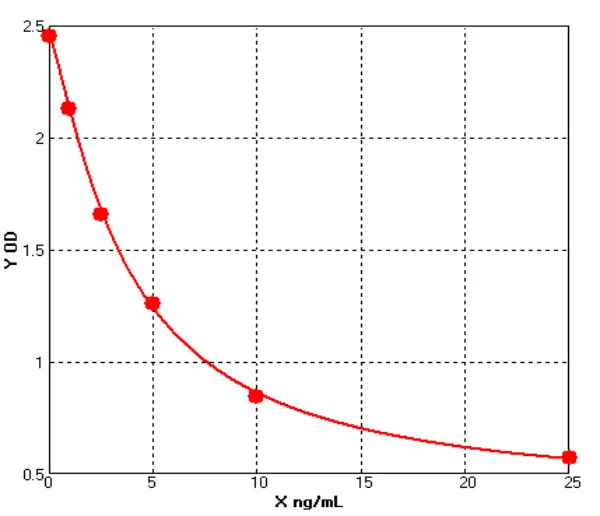
-
Mouse Insulin Receptor Substrate 1 ELISA kit (E03I0403)MANUAL
Cat. No.: E03I0403
Detection Range: 1.0-25ng/ml
Reactivity: Mouse
Sensitivity: 0.1ng/ml
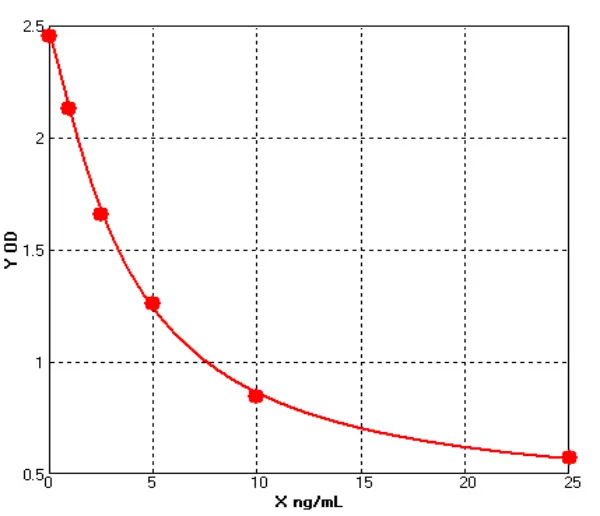
-
Mouse Insulin-Degrading Enzyme ELISA kit (E03I0332)MANUAL
Cat. No.: E03I0332
Detection Range: 1.0-25ng/ml
Reactivity: Mouse
Sensitivity: 0.1ng/ml
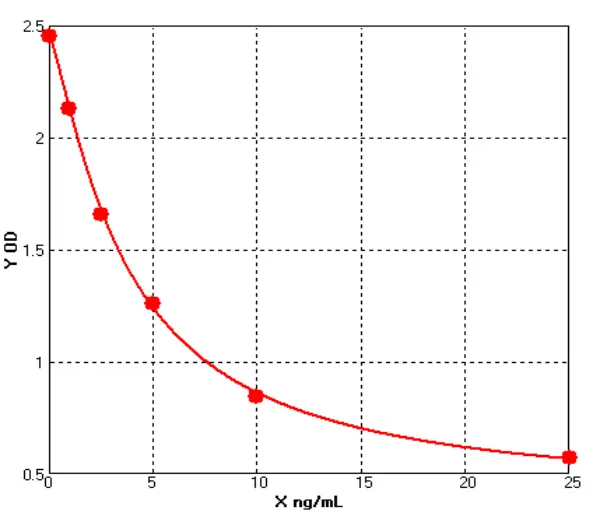
-
Mouse Thymosin β 4 ELISA kit (E03T0385)MANUAL
Cat. No.: E03T0385
Detection Range: 0.5-10ng/ml
Reactivity: Mouse
Sensitivity: 0.1ng/ml

-
Mouse Mucin 5 Subtype AC ELISA kit (E03M0350)MANUAL
Cat. No.: E03M0350
Detection Range: 1.0-25ng/ml
Reactivity: Mouse
Sensitivity: 0.1ng/ml
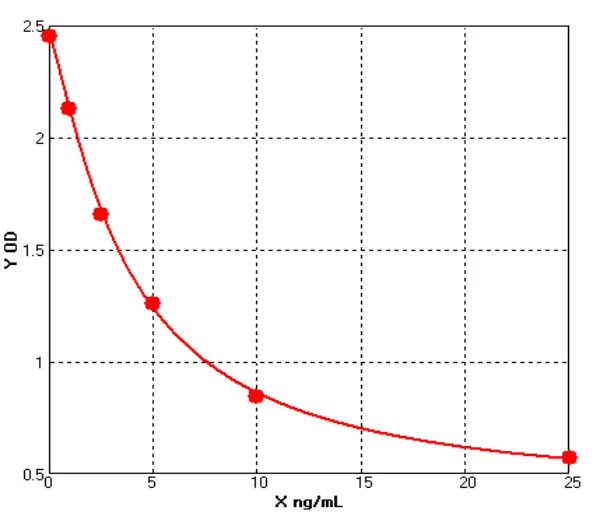
-
Mouse Nephrin ELISA kit (E03N0079)MANUAL
Cat. No.: E03N0079
Detection Range: 1.0-25ng/ml
Reactivity: Mouse
Sensitivity: 0.1ng/ml
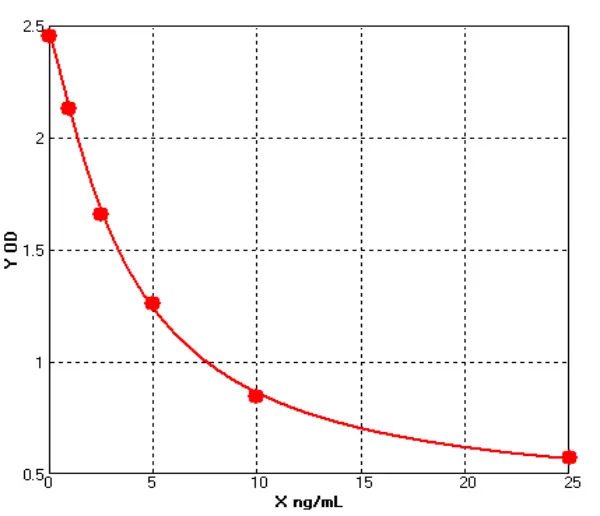
-
Mouse Pulmonary Surfactant Associated Protein D ELISA kit (E03S0170)MANUAL
Cat. No.: E03S0170
Detection Range: 1.0-25ng/ml
Reactivity: Mouse
Sensitivity: 0.1ng/ml

-
Mouse Progesterone ELISA kit (E03P0200)MANUAL
Cat. No.: E03P0200
Detection Range: 1.0-25ng/ml
Reactivity: Mouse
Sensitivity: 0.1ng/ml

-
Mouse Protein C ELISA kit (E03P0141)MANUAL
Cat. No.: E03P0141
Detection Range: 1.0-25ng/ml
Reactivity: Mouse
Sensitivity: 0.1ng/ml

-
Mouse Epinephrine/Adrenaline ELISA kit (E03A0007)
Cat. No.: E03A0007
Detection Range: 5-100ng/ml
Reactivity: Mouse
Sensitivity: 1.0ng/ml
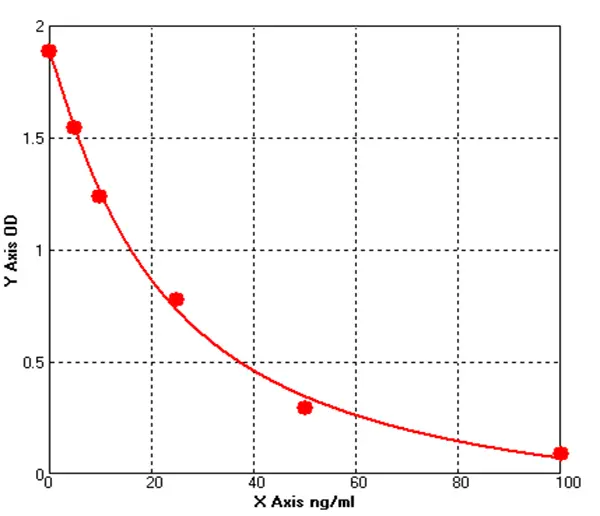
-
Mouse Androgen ELISA kit (E03A0019)MANUAL
Cat. No.: E03A0019
Detection Range: 0.5-10ng/ml
Reactivity: Mouse
Sensitivity: 0.1ng/ml
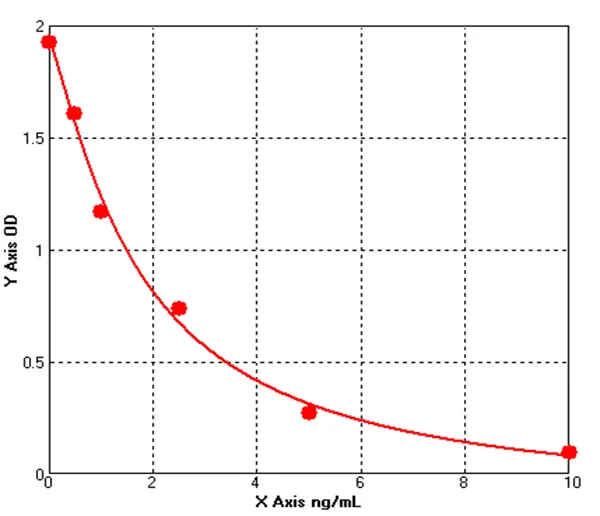
-
Mouse Alkaline Phosphatase ELISA kit (E03A0031)MANUAL
Cat. No.: E03A0031
Detection Range: 5-100ng/ml
Reactivity: Mouse
Sensitivity: 1.0ng/ml
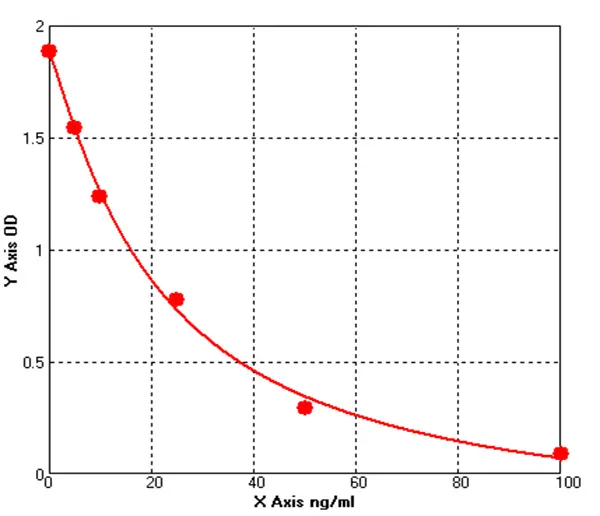
-
Mouse Artemin ELISA kit (E03A0032)MANUAL
Cat. No.: E03A0032
Detection Range: 50-1000pg/ml
Reactivity: Mouse
Sensitivity: 1.0pg/ml
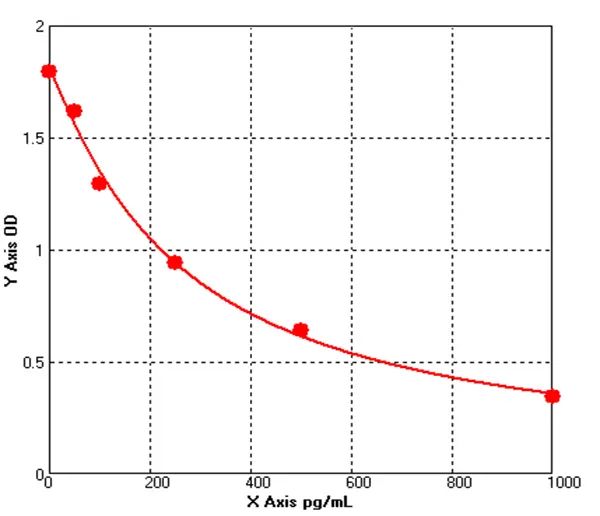
-
Mouse Anti Nuclear Antibody ELISA kit (E03A0040)MANUAL
Cat. No.: E03A0040
Detection Range: 50-1000ng/ml
Reactivity: Mouse
Sensitivity: 1.0ng/ml

-
Mouse Adenosine Monophosphate Activated Protein ELISA kit (E03A0043)MANUAL
Cat. No.: E03A0043
Detection Range: 50-1000pg/ml
Reactivity: Mouse
Sensitivity: 1.0pg/ml
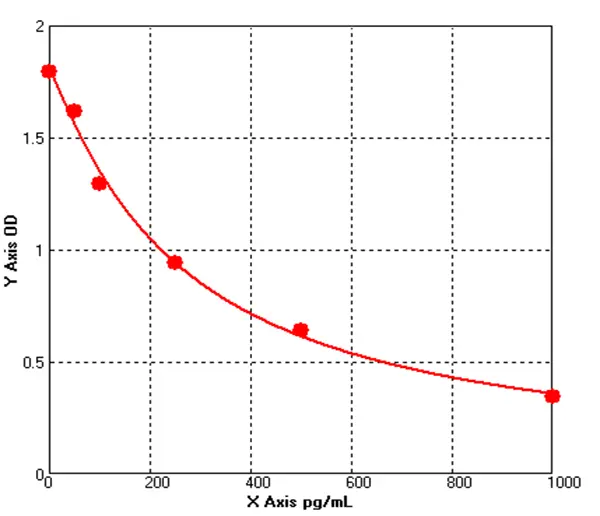
-
Mouse Amyloid β Protein 40 ELISA kit (E03A0049)MANUAL
Cat. No.: E03A0049
Detection Range: 50-1000pg/ml
Reactivity: Mouse
Sensitivity: 1.0pg/ml
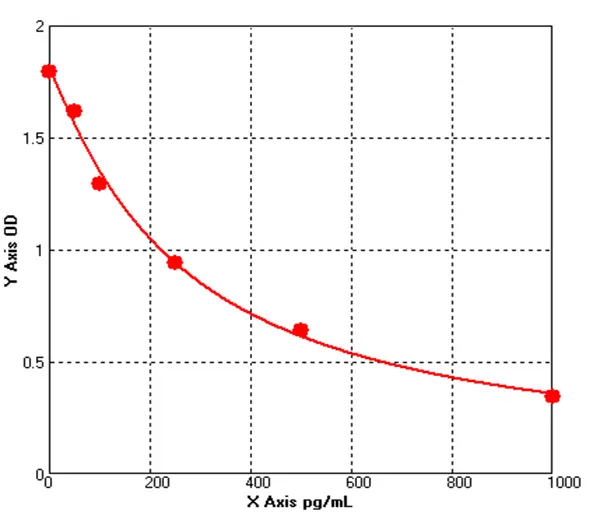
-
Mouse Amyloid β Protein 42 ELISA kit (E03A0050)MANUAL
Cat. No.: E03A0050
Detection Range: 50-1000pg/ml
Reactivity: Mouse
Sensitivity: 1.0pg/ml
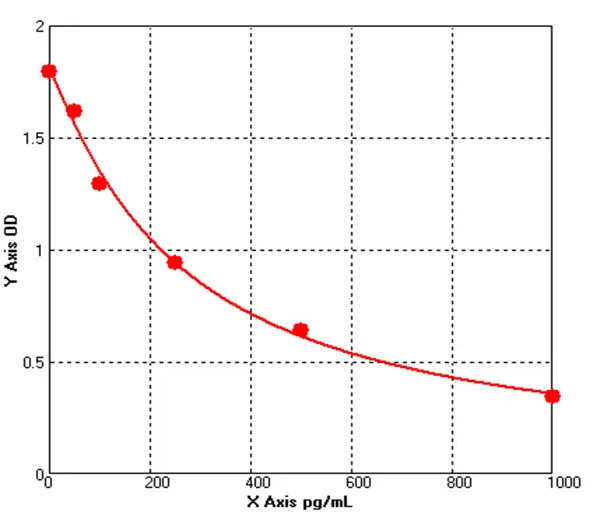
-
Mouse Antioncogene P62 Protein ELISA kit (E03A0056)MANUAL
Cat. No.: E03A0056
Detection Range: 2.5-50ng/ml
Reactivity: Mouse
Sensitivity: 0.1ng/mL
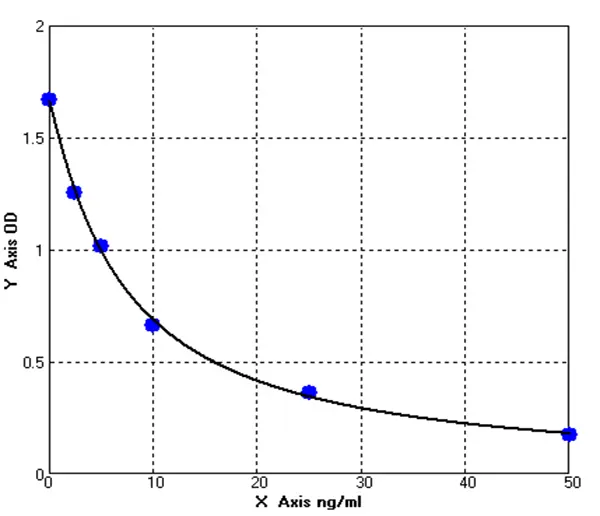
-
Mouse Acetylcholine Receptor M1 ELISA kit (E03A0107)MANUAL
Cat. No.: E03A0107
Detection Range: 25-500ng/mL
Reactivity: Mouse
Sensitivity: 1.0 ng/mL
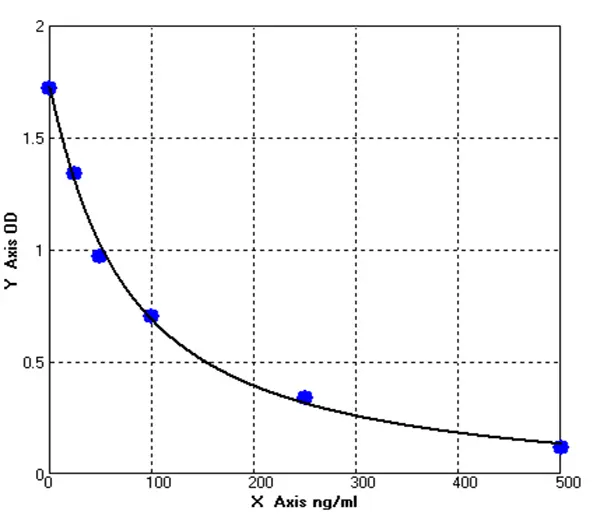
-
Mouse Total Adiponectin Protein ELISA kit (E03A0125)MANUAL
Cat. No.: E03A0125
Detection Range: 1.0-25ng/ml
Reactivity: Mouse
Sensitivity: 0.1ng/ml
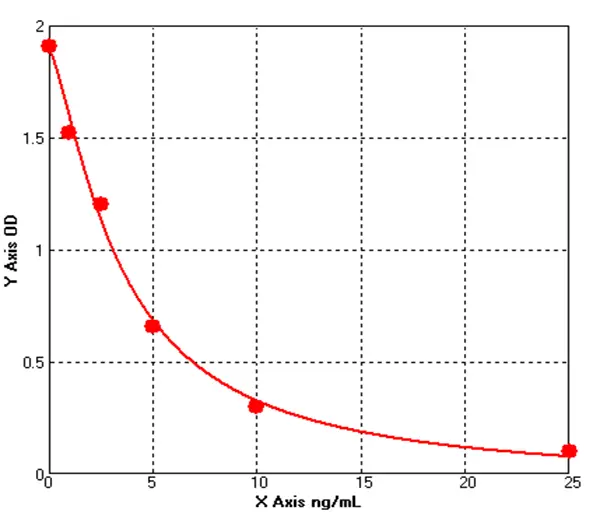
-
Mouse Angiotensin 1 ELISA kit (E03A0201)MANUAL
Cat. No.: E03A0201
Detection Range: 0.5-10ng/mL
Reactivity: Mouse
Sensitivity: 0.1ng/mL
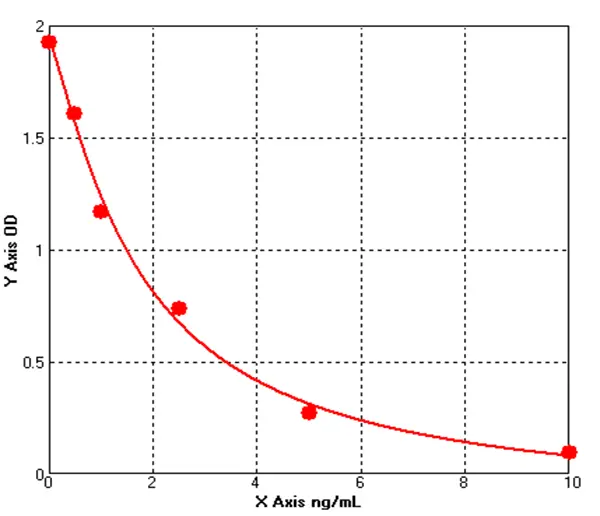
-
Mouse Mullerian Inhibiting Substance/Anti Mullerian Hormone ELISA kit (E03A0202)MANUAL
Cat. No.: E03A0202
Detection Range: 1.0-25ng/ml
Reactivity: Mouse
Sensitivity: 0.1ng/ml
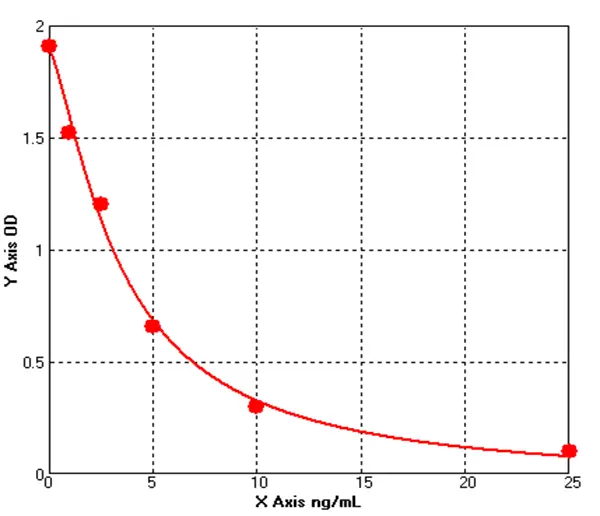
-
Mouse Angiotensin 2 ELISA kit (E03A0204)MANUAL
Cat. No.: E03A0204
Detection Range: 50-1000pg/ml
Reactivity: Mouse
Sensitivity: 1.0pg/ml
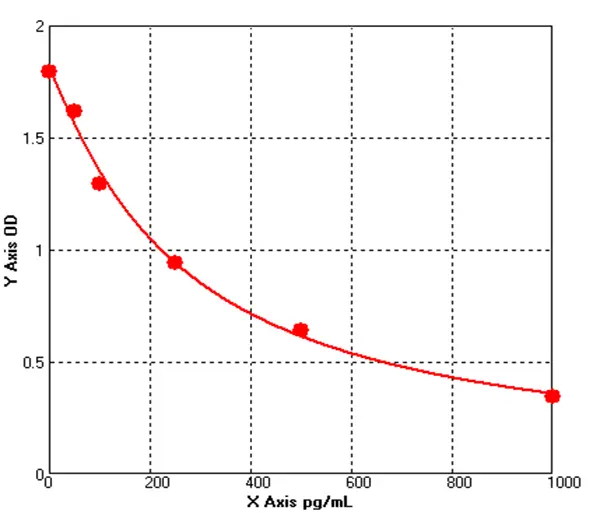
-
Mouse Angiotensin (1-7) ELISA kit (E03A0206)MANUAL
Cat. No.: E03A0206
Detection Range: 50-1000pg/ml
Reactivity: Mouse
Sensitivity: 1.0pg/ml
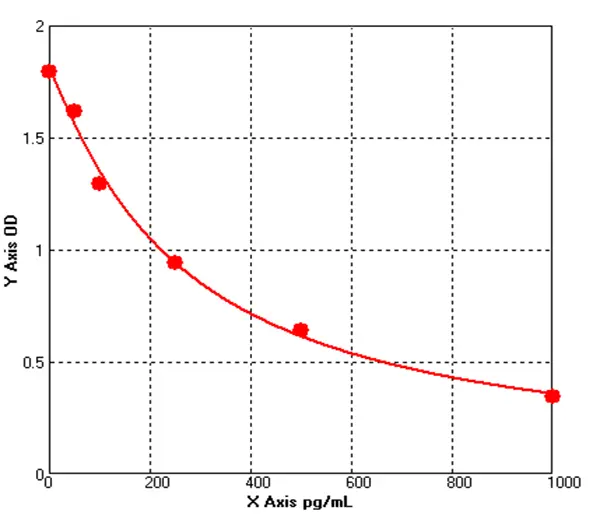
-
Mouse Malondialdehyde ELISA kit (E03M0023)MANUAL
Cat. No.: E03M0023
Detection Range: 2.5-50ng/ml
Reactivity: Mouse
Sensitivity: 0.1ng/ml

Mouse ELISA Kits FAQs
-
Q
How to feed mice in laboratory, and what are their lab environment requirements?
Usually, the physiological and pathological research of mice requires an environment of SPF level and harsh conditions. Usually three main categories should be focused on: facility environment, feed/water and plastics, husbandry operations and day-to-day management, and waste disposal. The facility environment needs to control temperature and humidity, air cleanliness, and reduce noise pollution. The cages are made of stainless steel; the feed requires balanced nutrients, vacuum and high-pressure sterilization, drinking water needs to be acidified to inhibit bacterial growth, and the bedding is hygroscopic and non-toxic. Smell. Daily feeding rules, and records of mouse strains, and breeding records. The final waste treatment includes the harmless treatment of sewage and solid waste, animal carcasses and sharps, and special infection and radioactive waste treatment.
-
Q
What are the differences between different subspecies of mouse and the precautions when preparing mouse samples?
The mouse has less serum, which is easy to form hemolysis. Blood needs to be taken from the celiac artery, and the serum can be separated after standing for detection. The mouse can be divided into many subspecies, including nude mouse, black mouse and white mouse. Taking the white mice as an example, there are strains of A, AKR, BALB/c, RF, SWR, etc. The test kits of mouse-specific strains should be optimized as far as possible.


